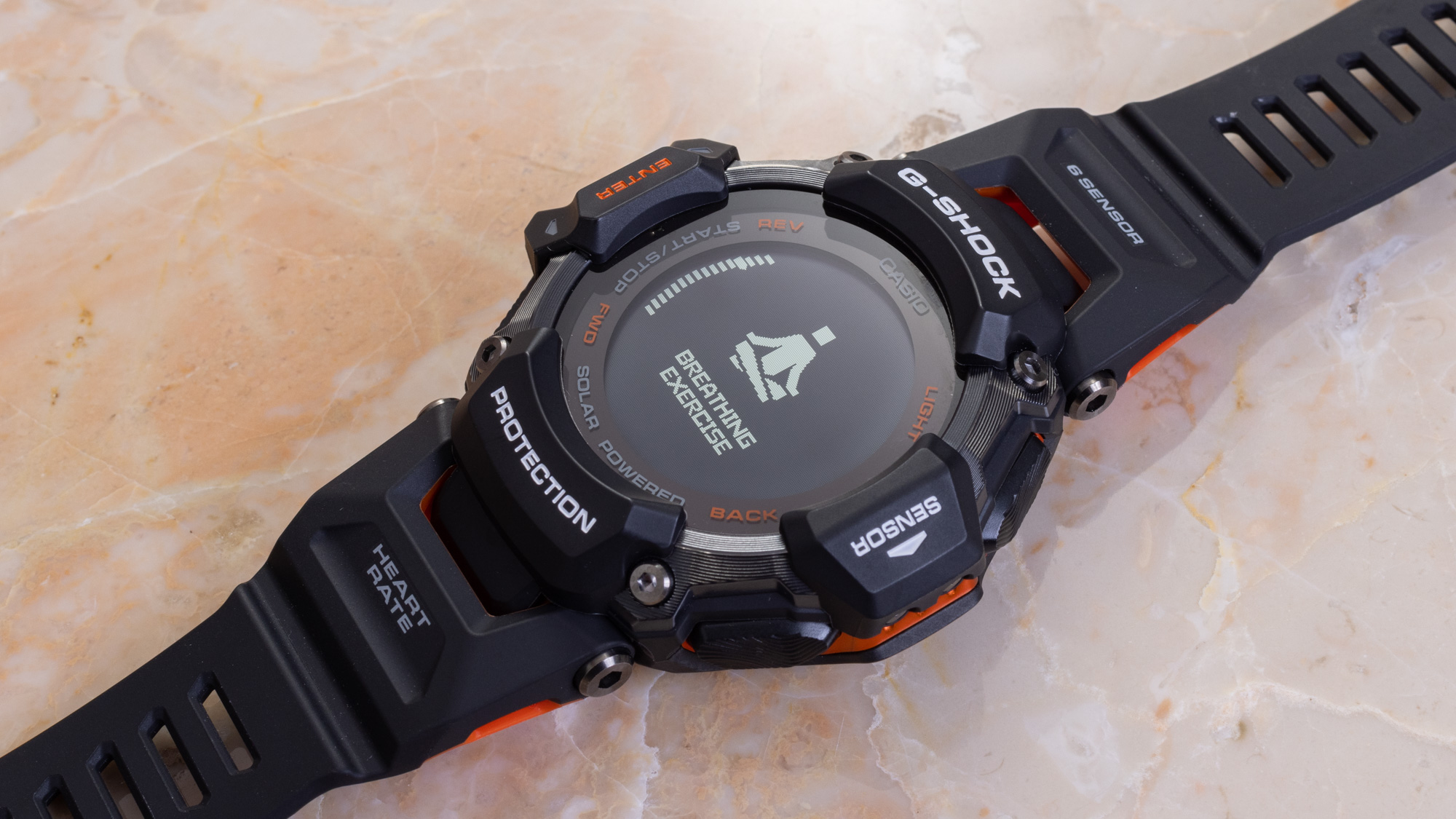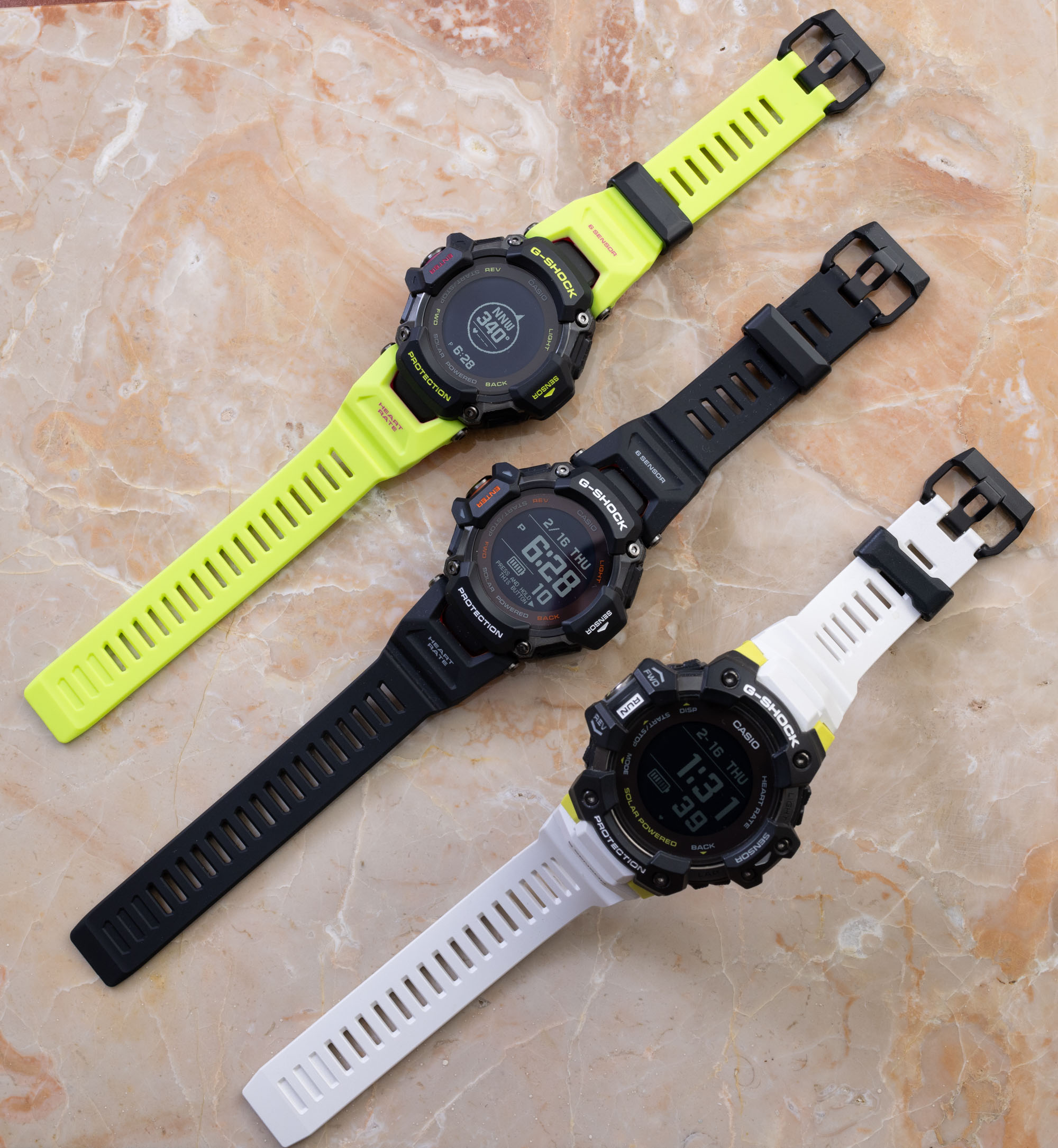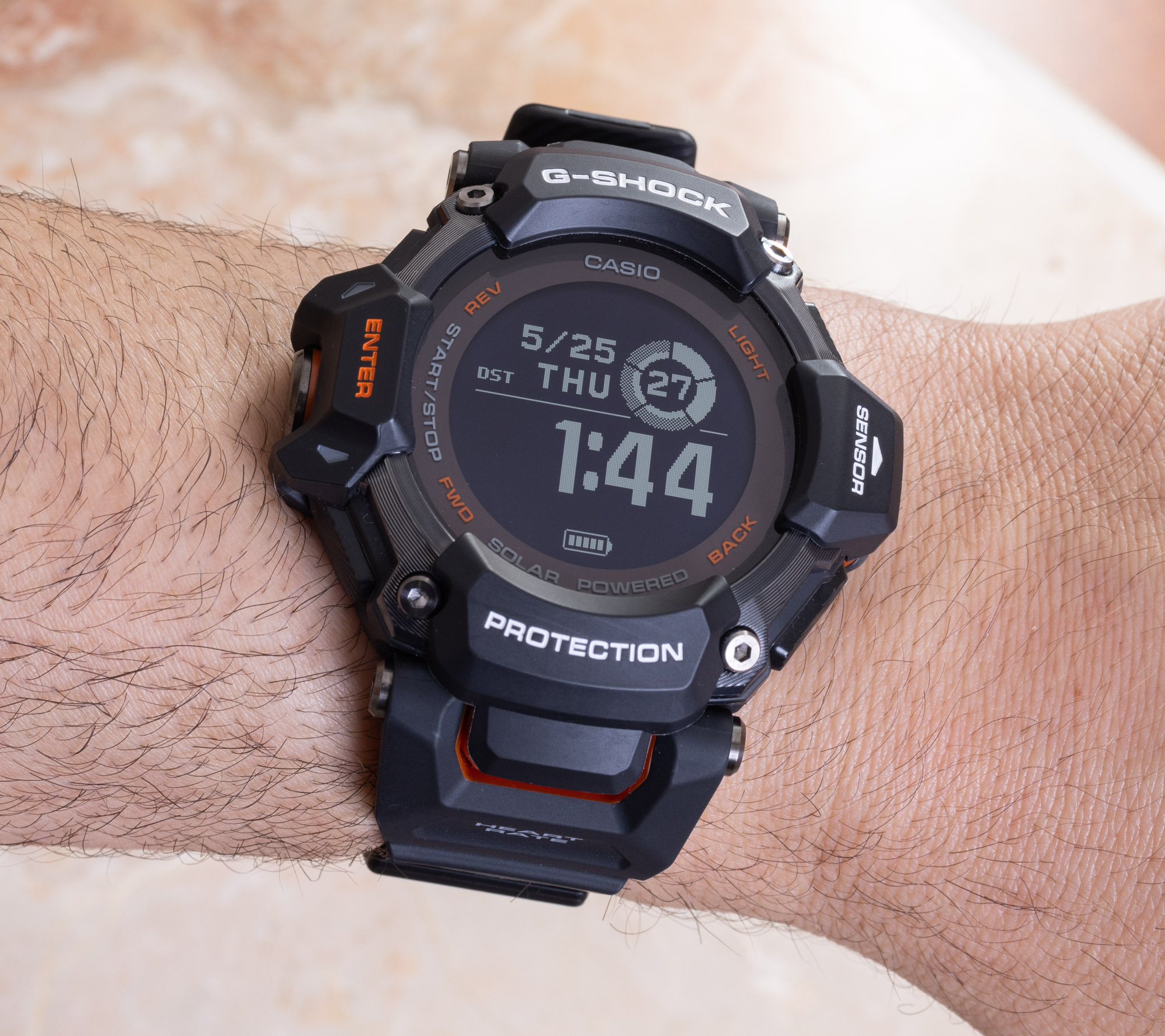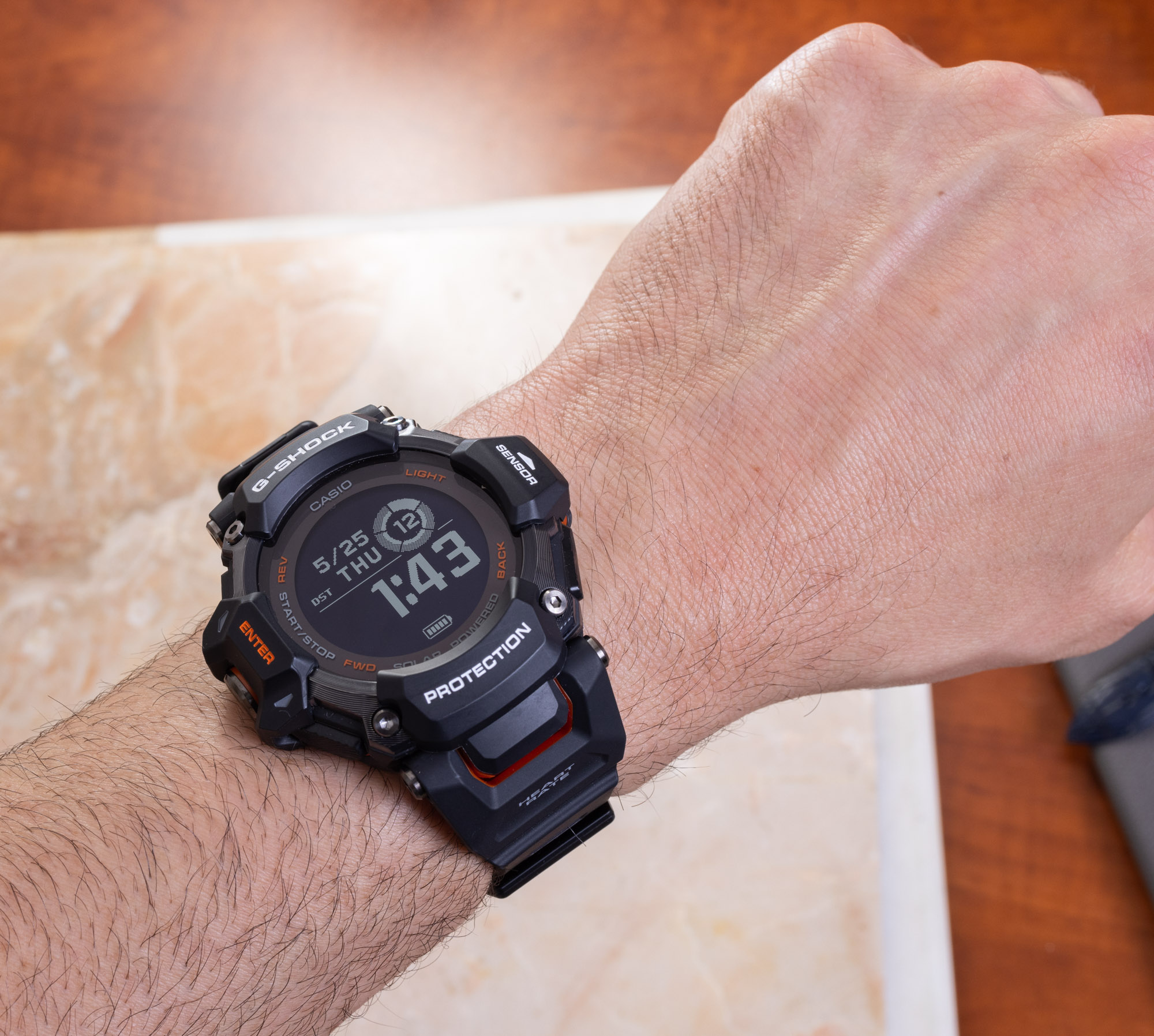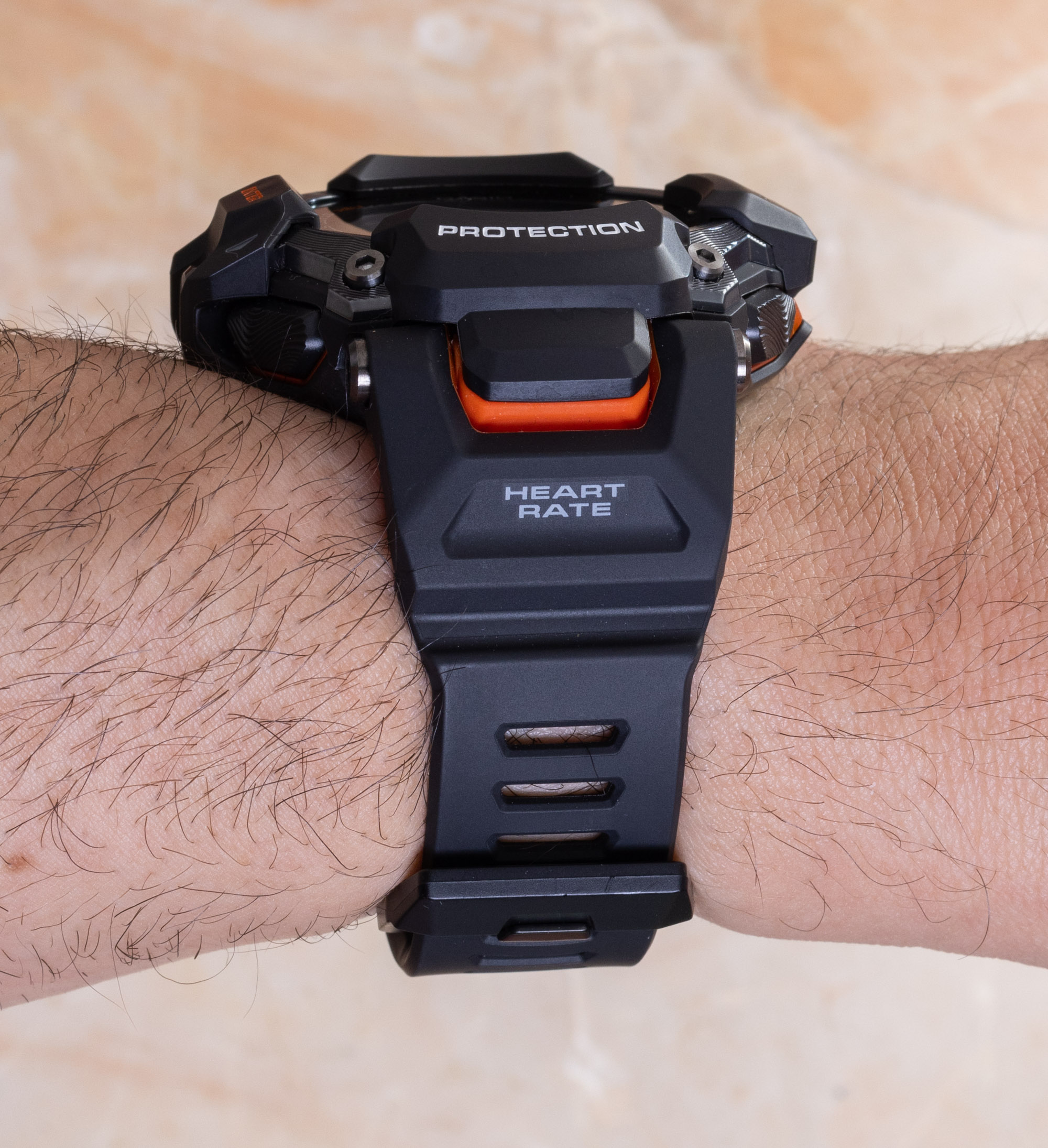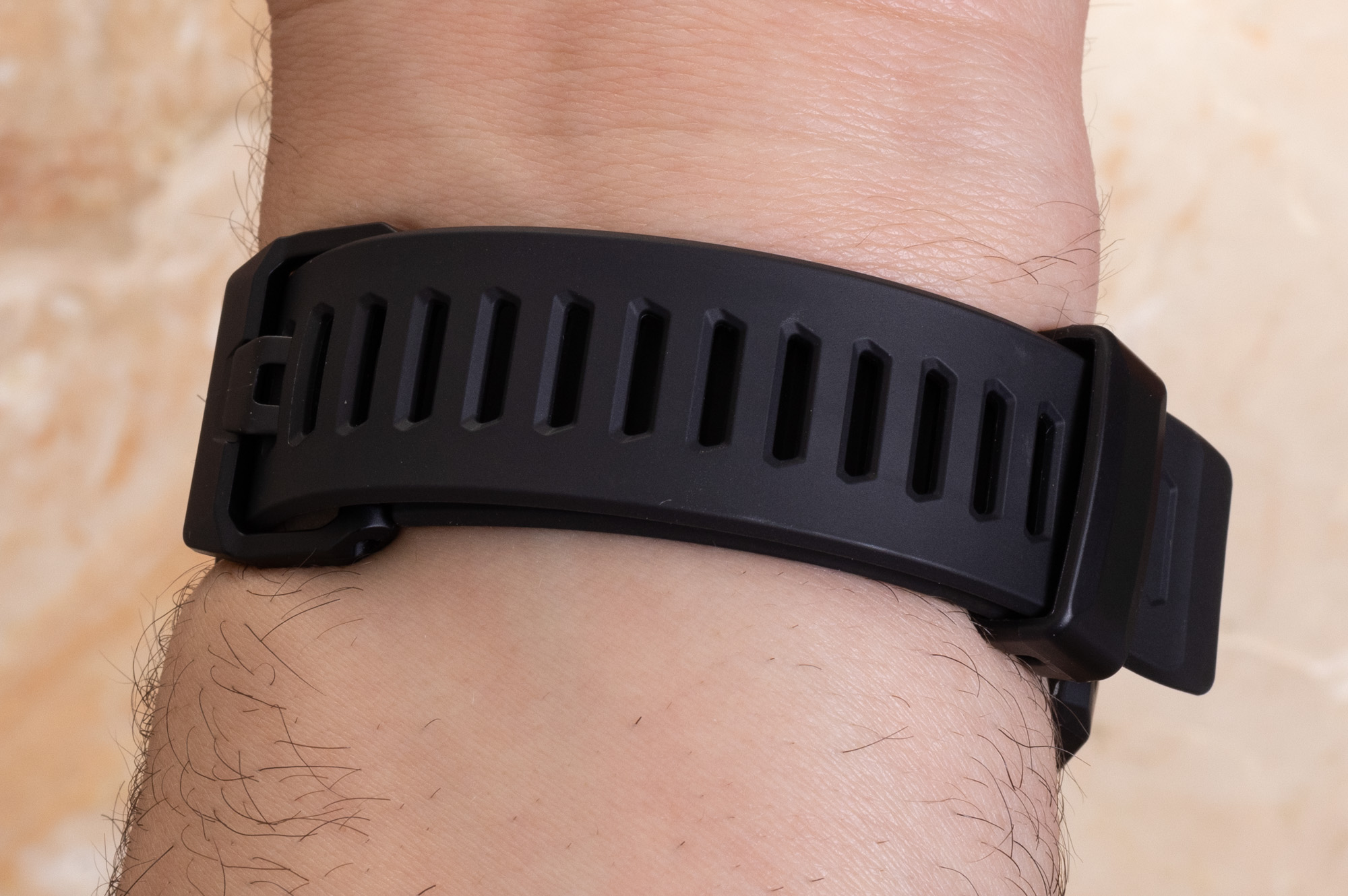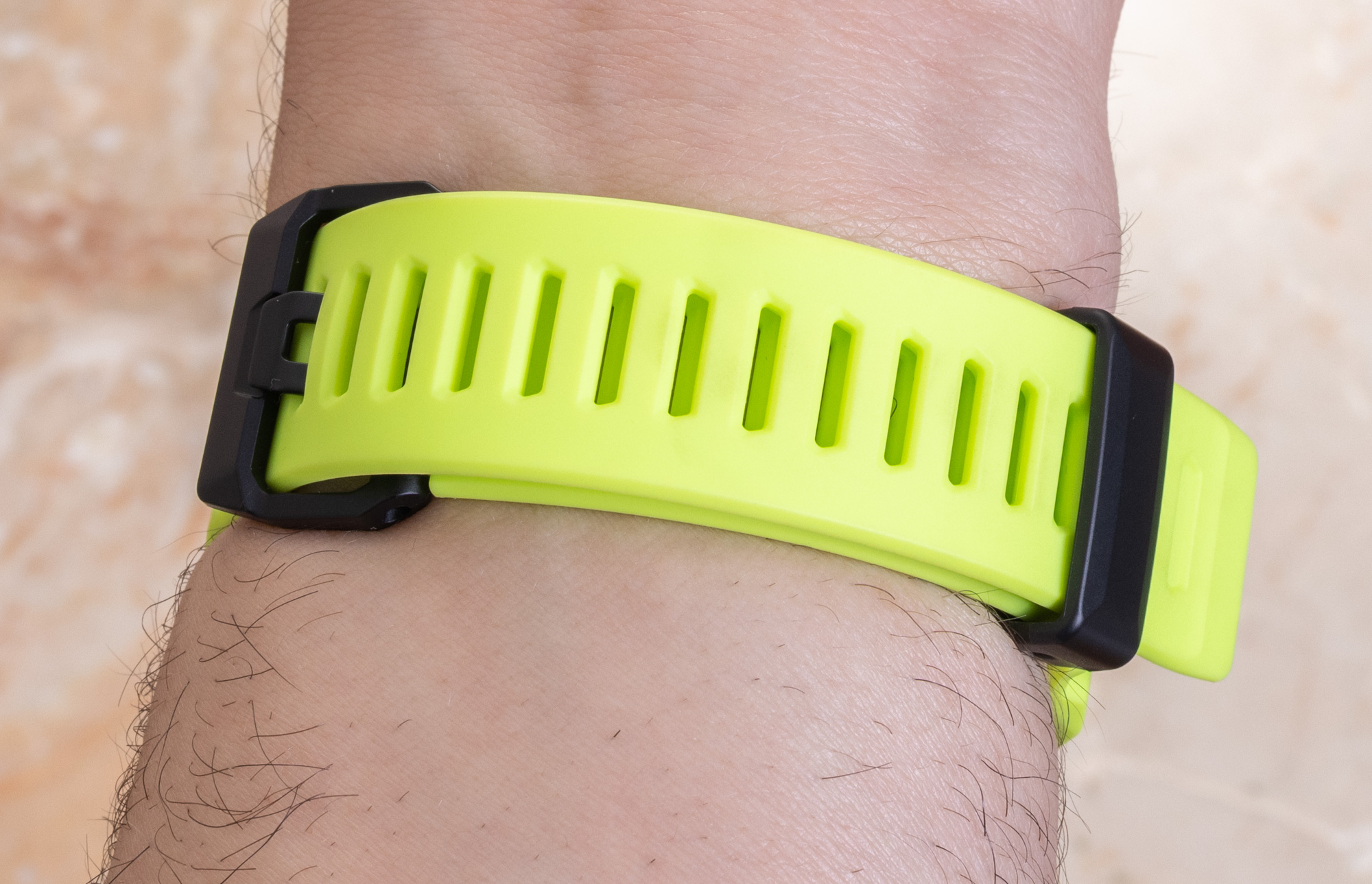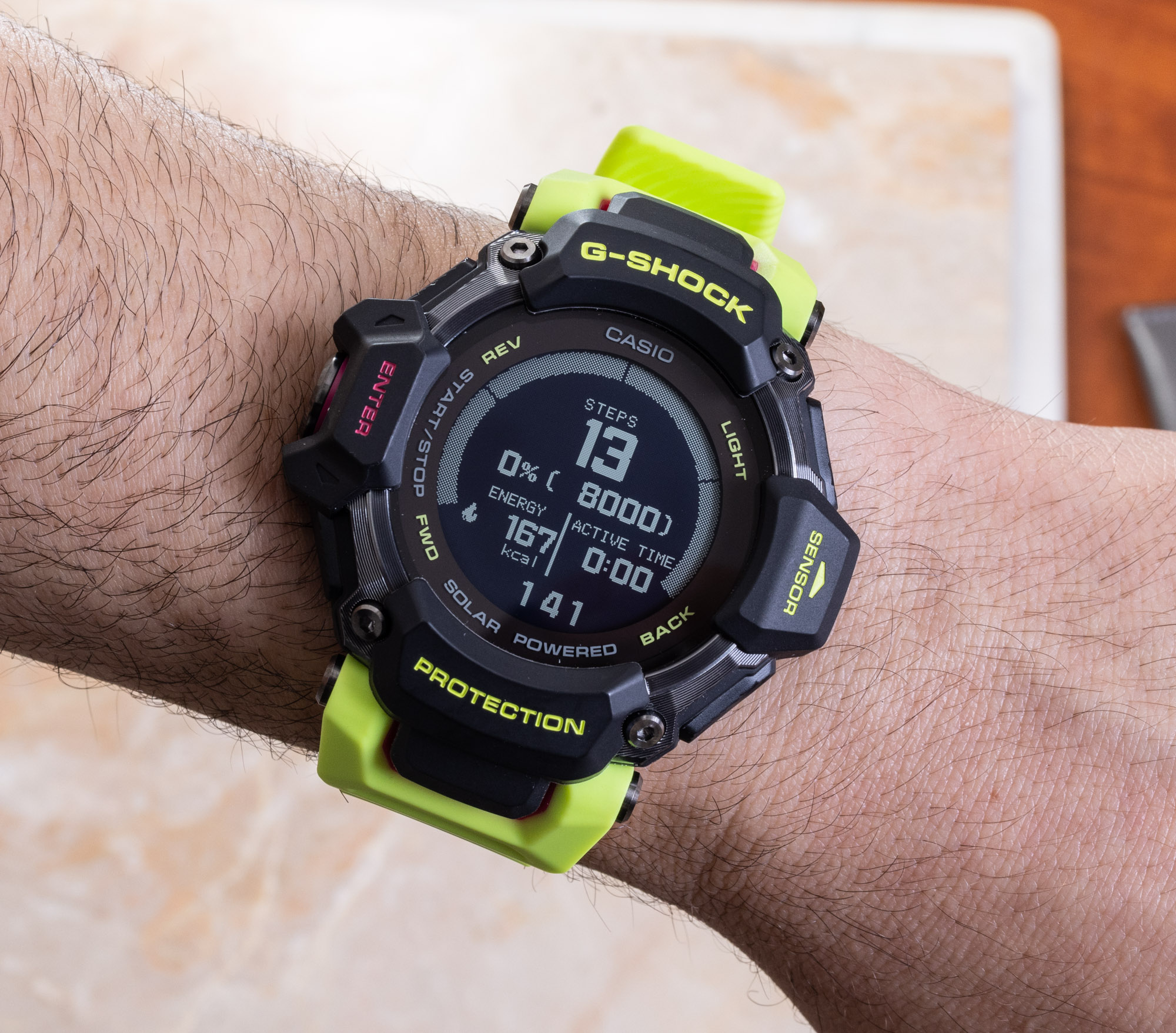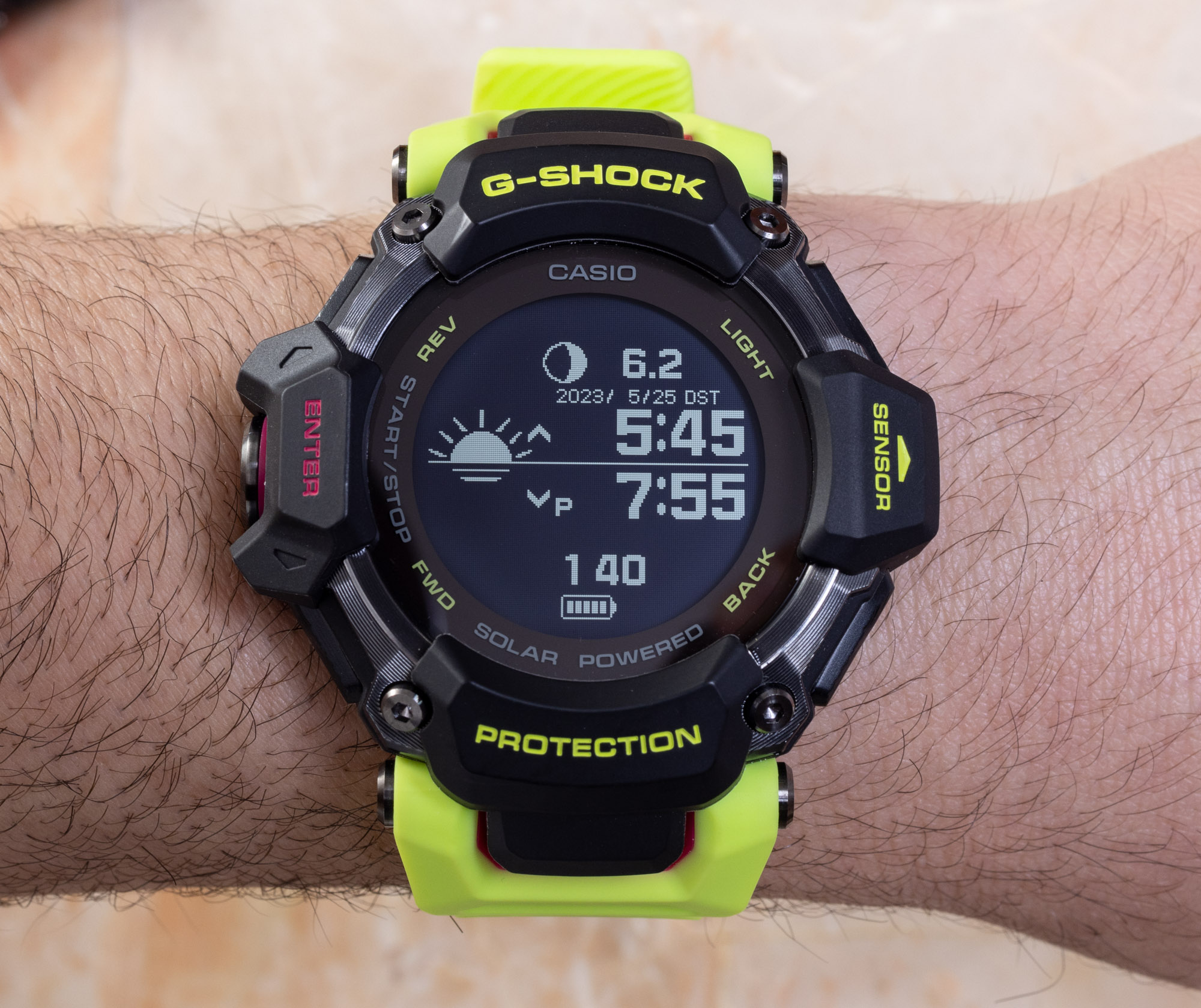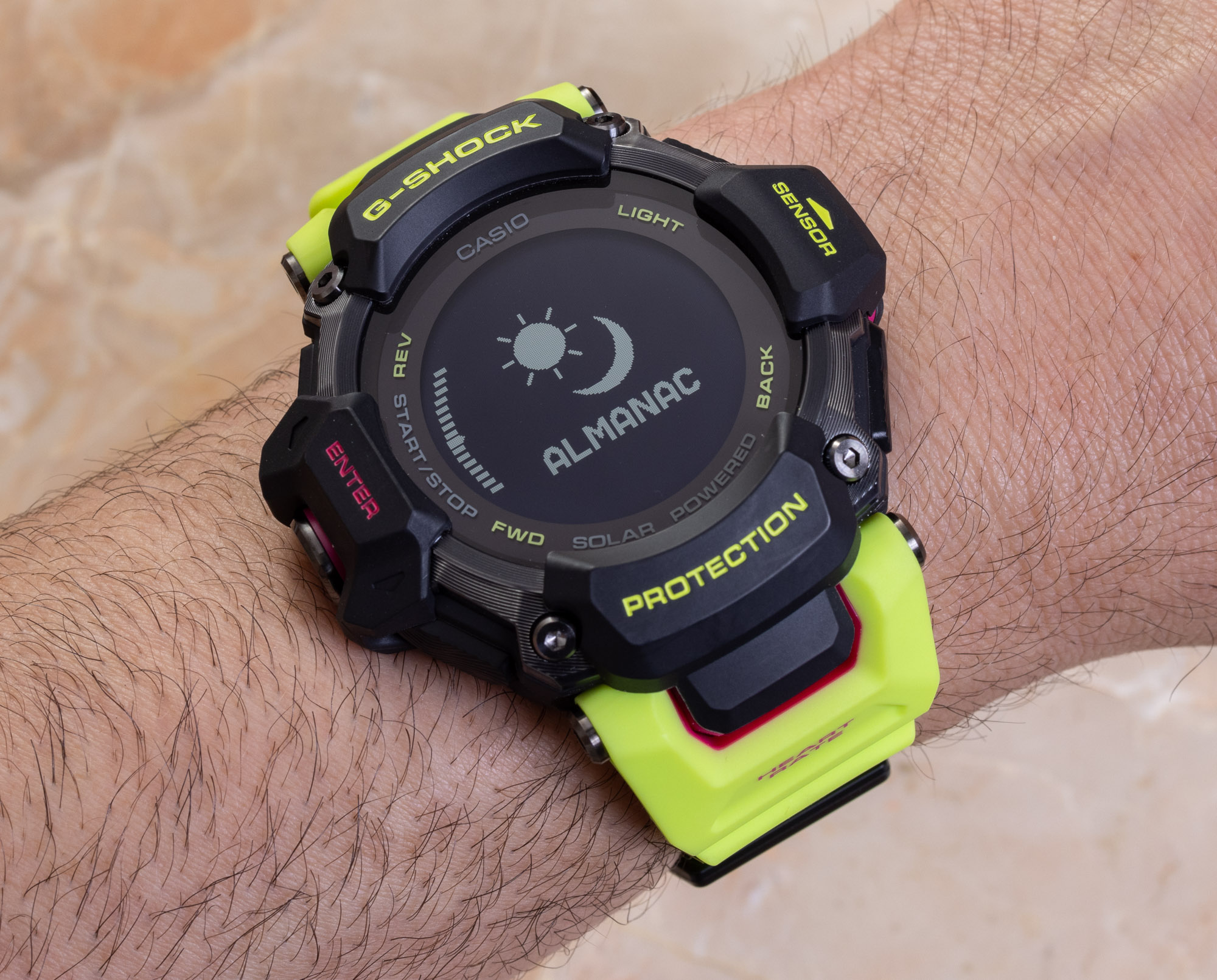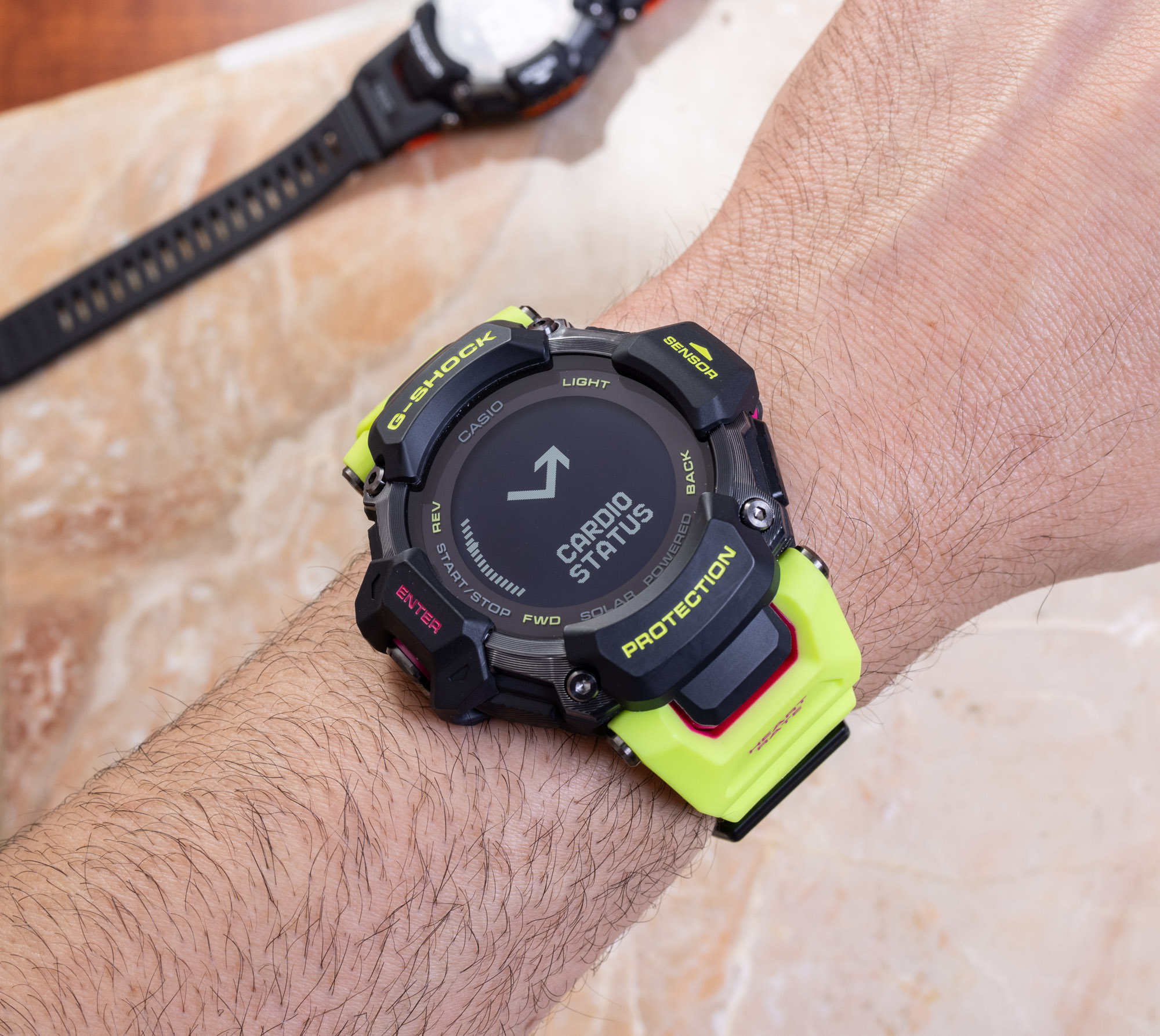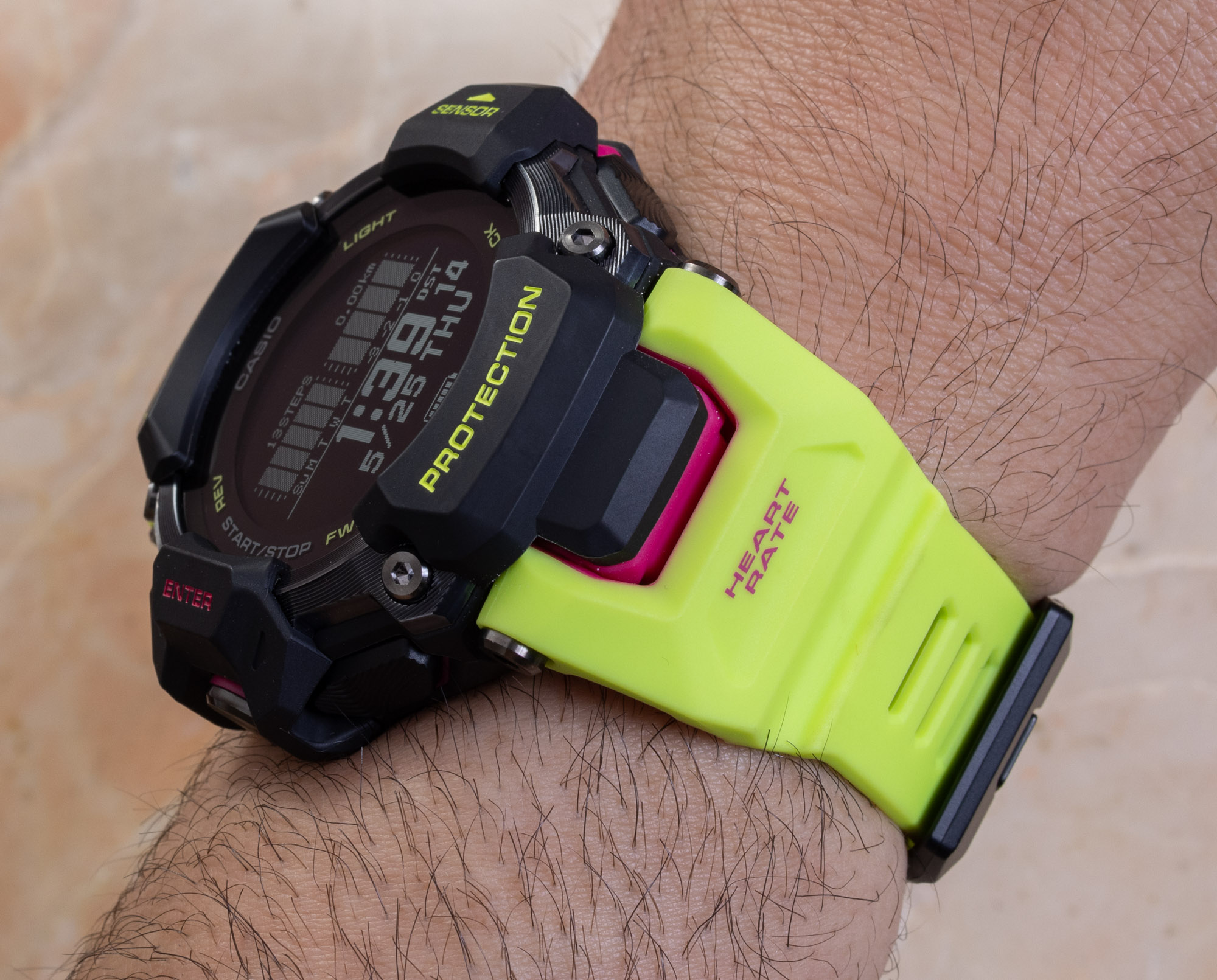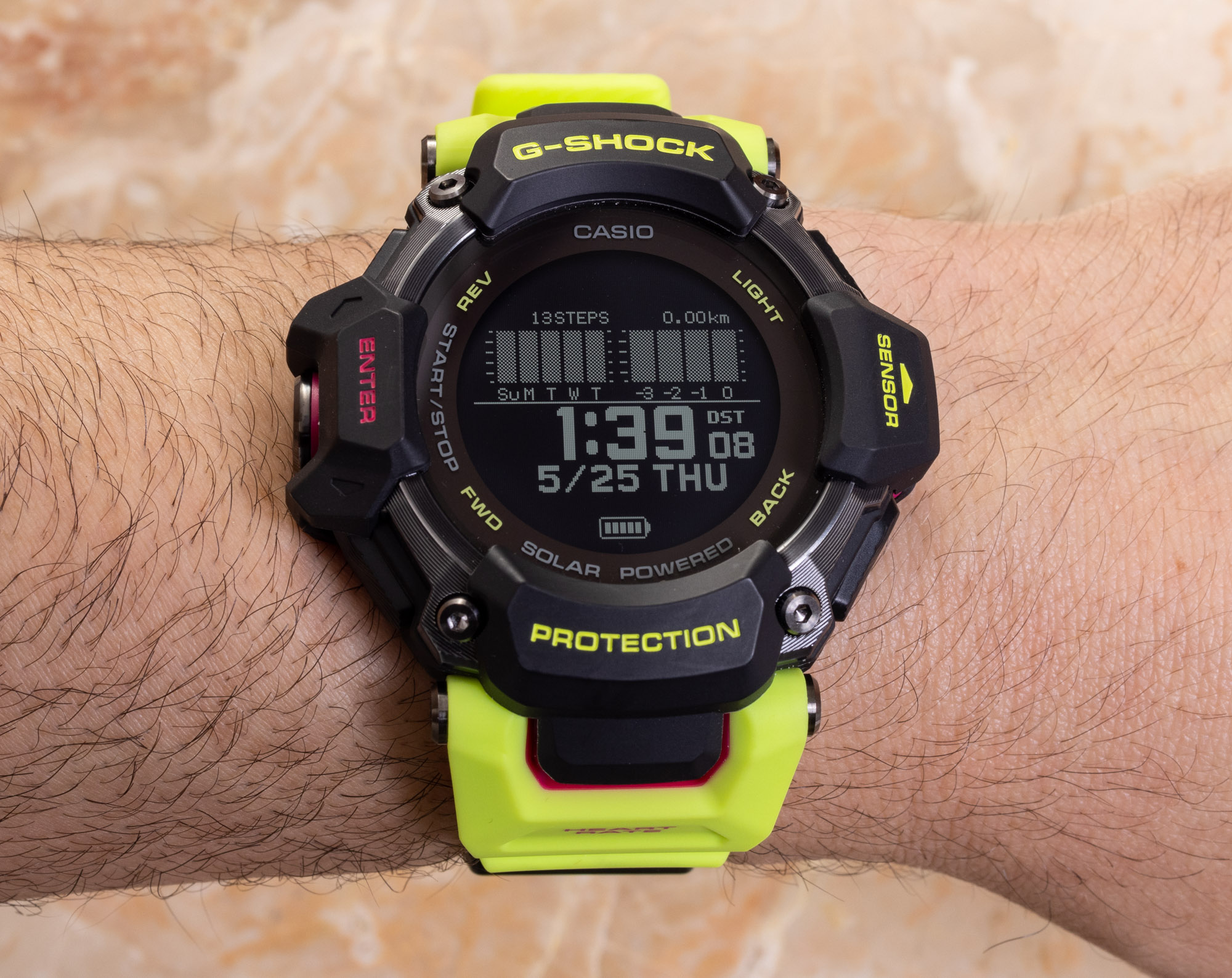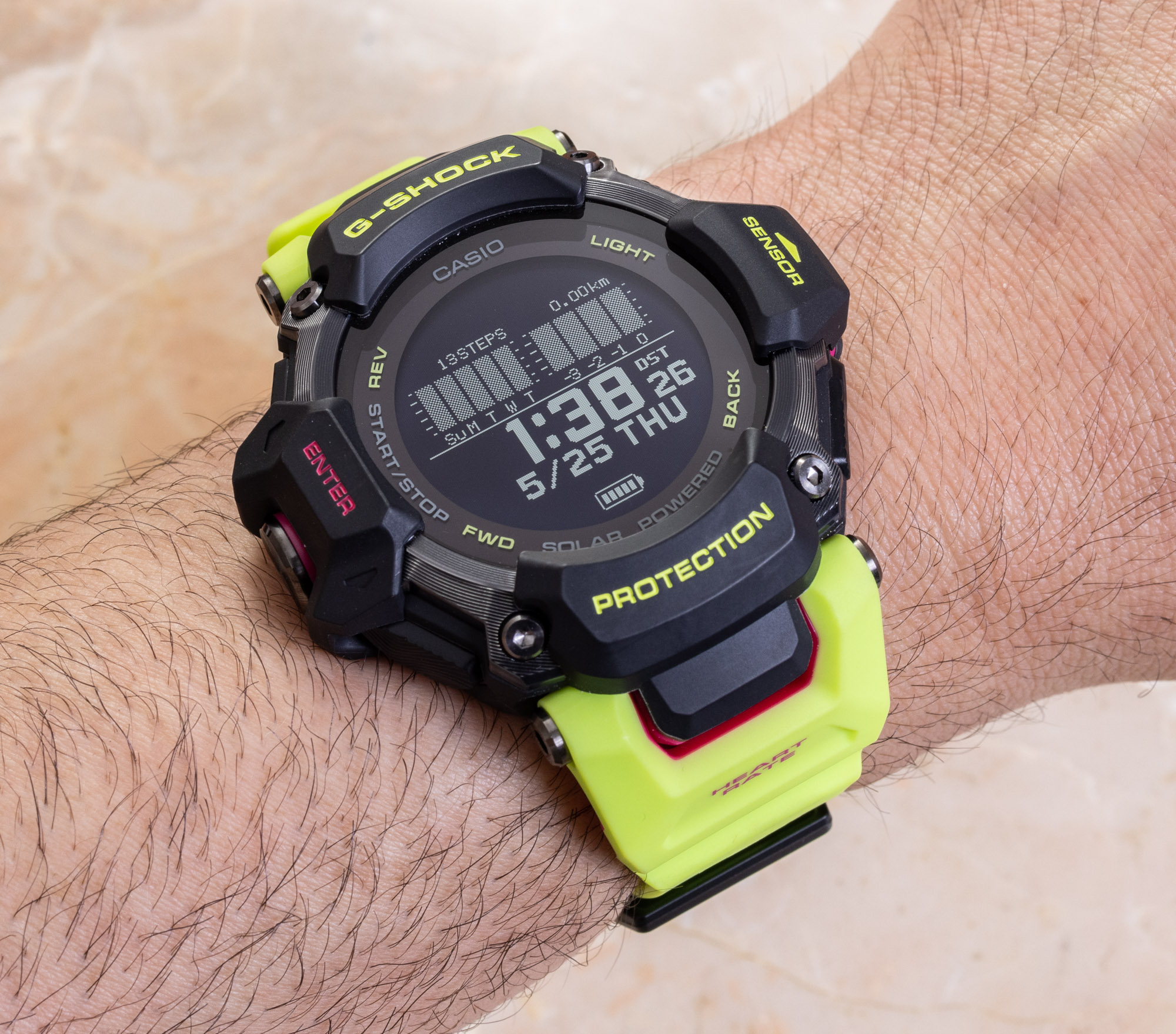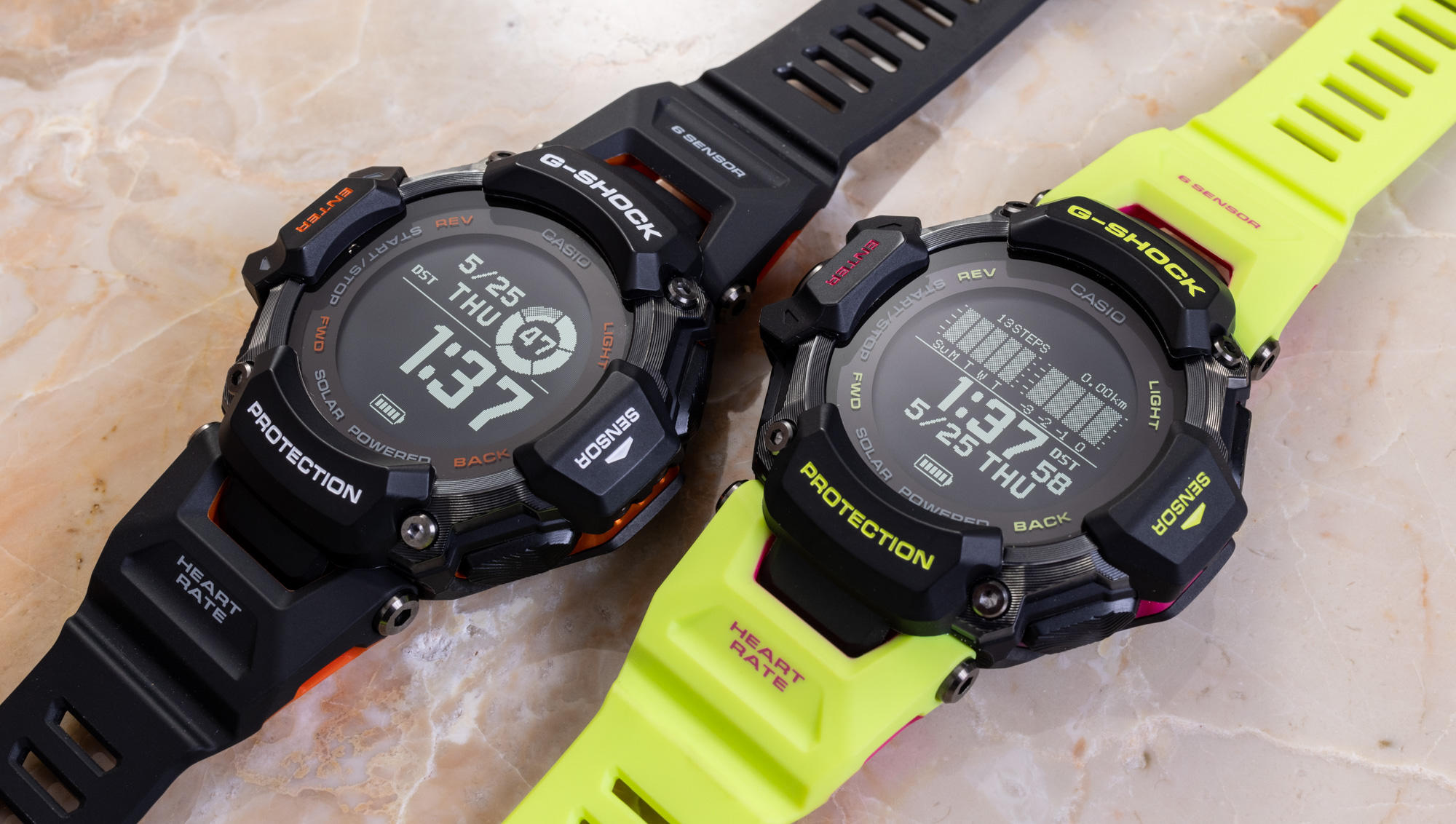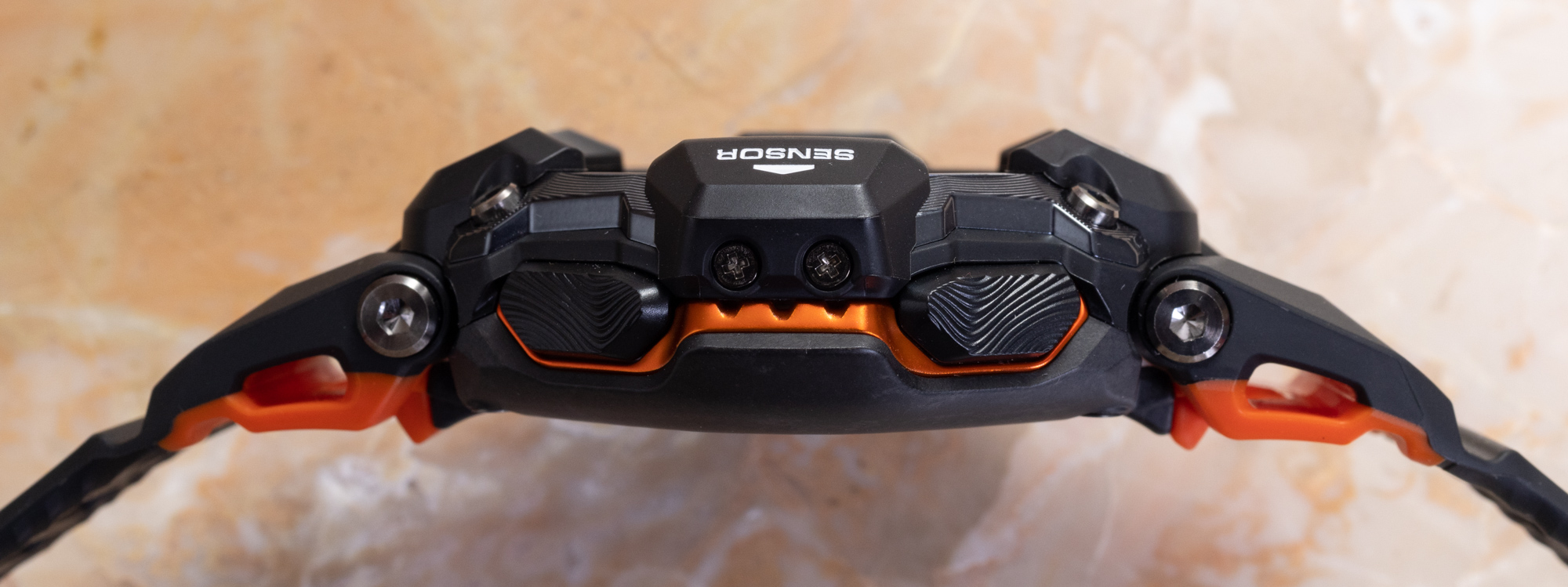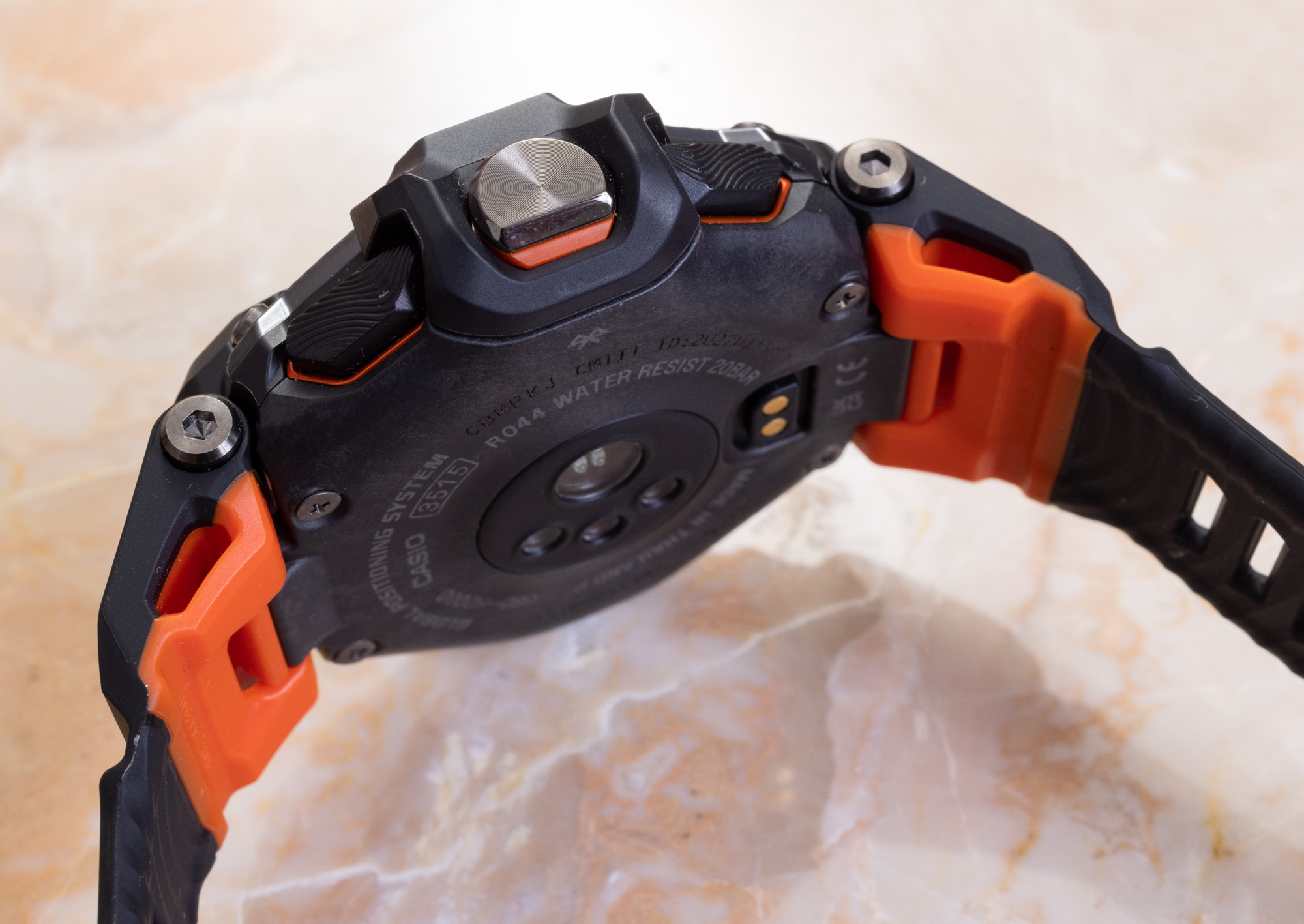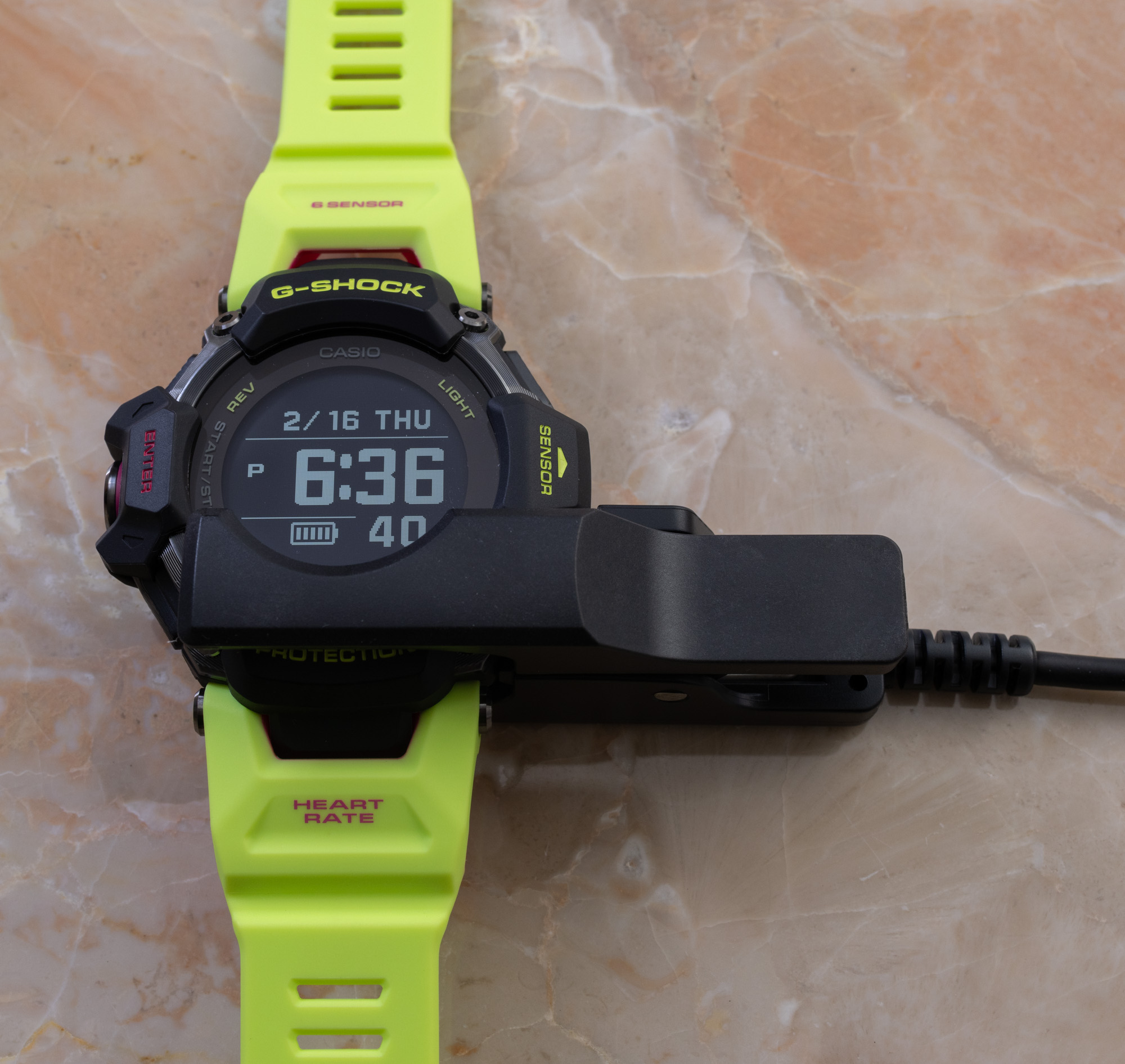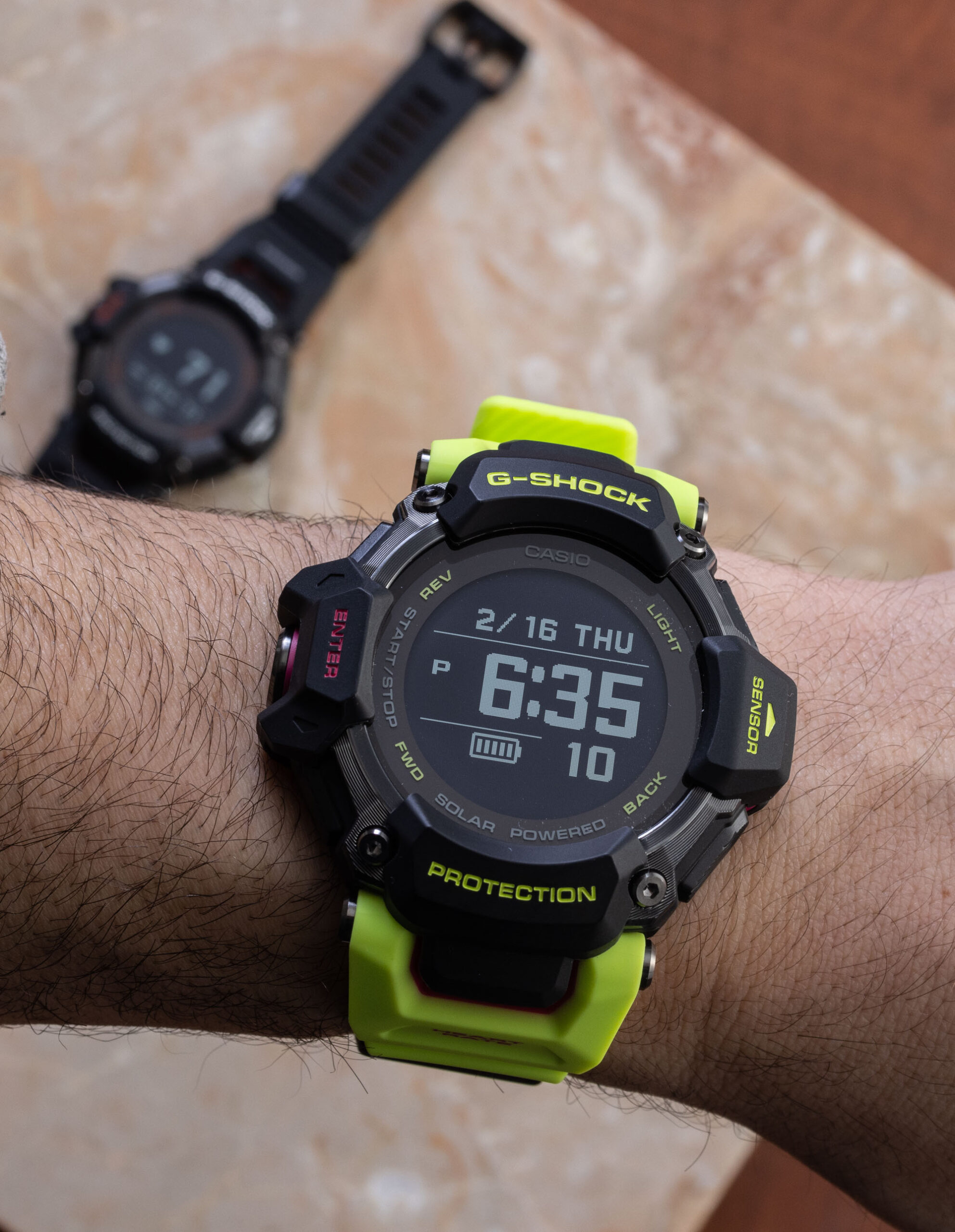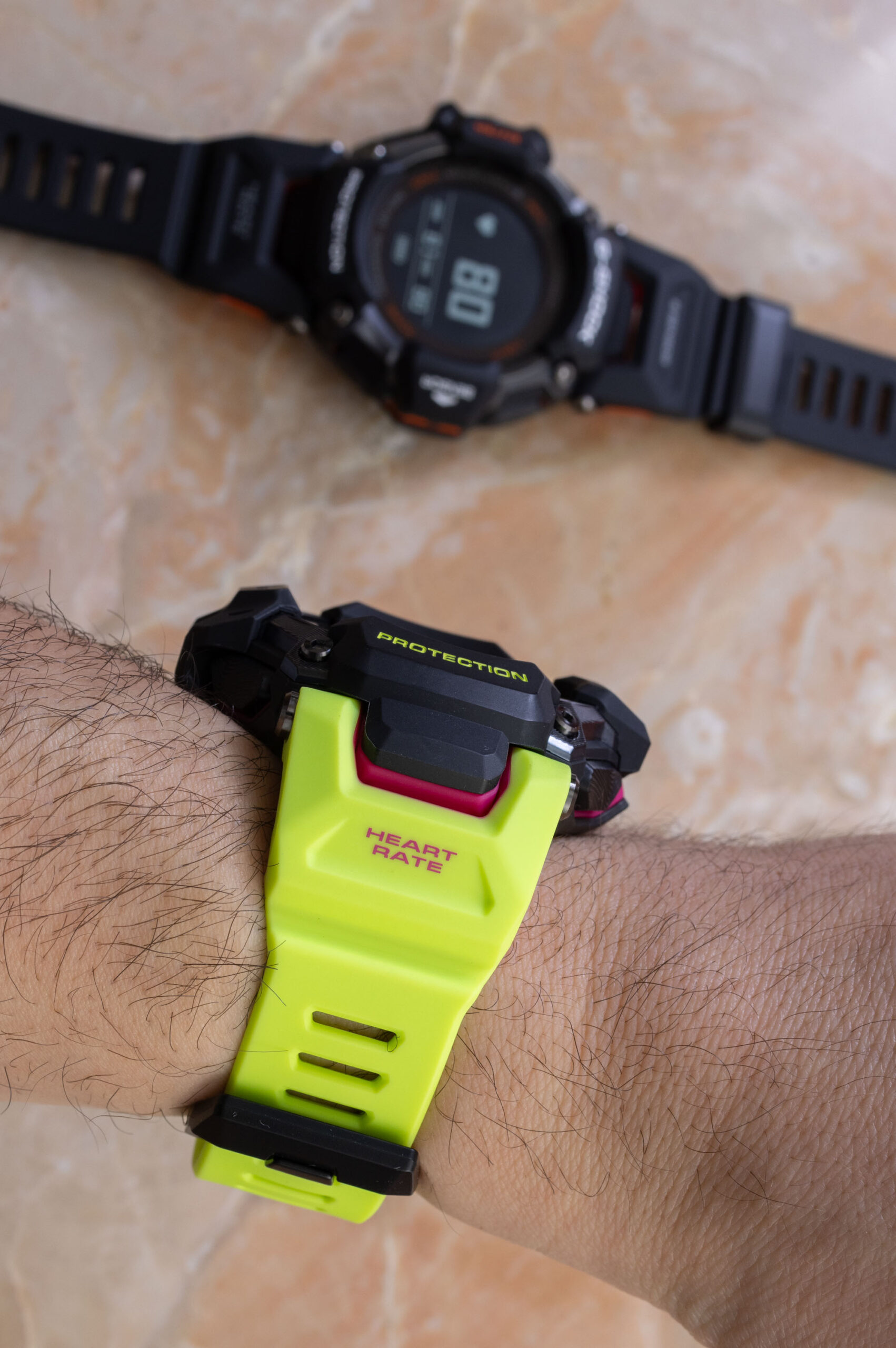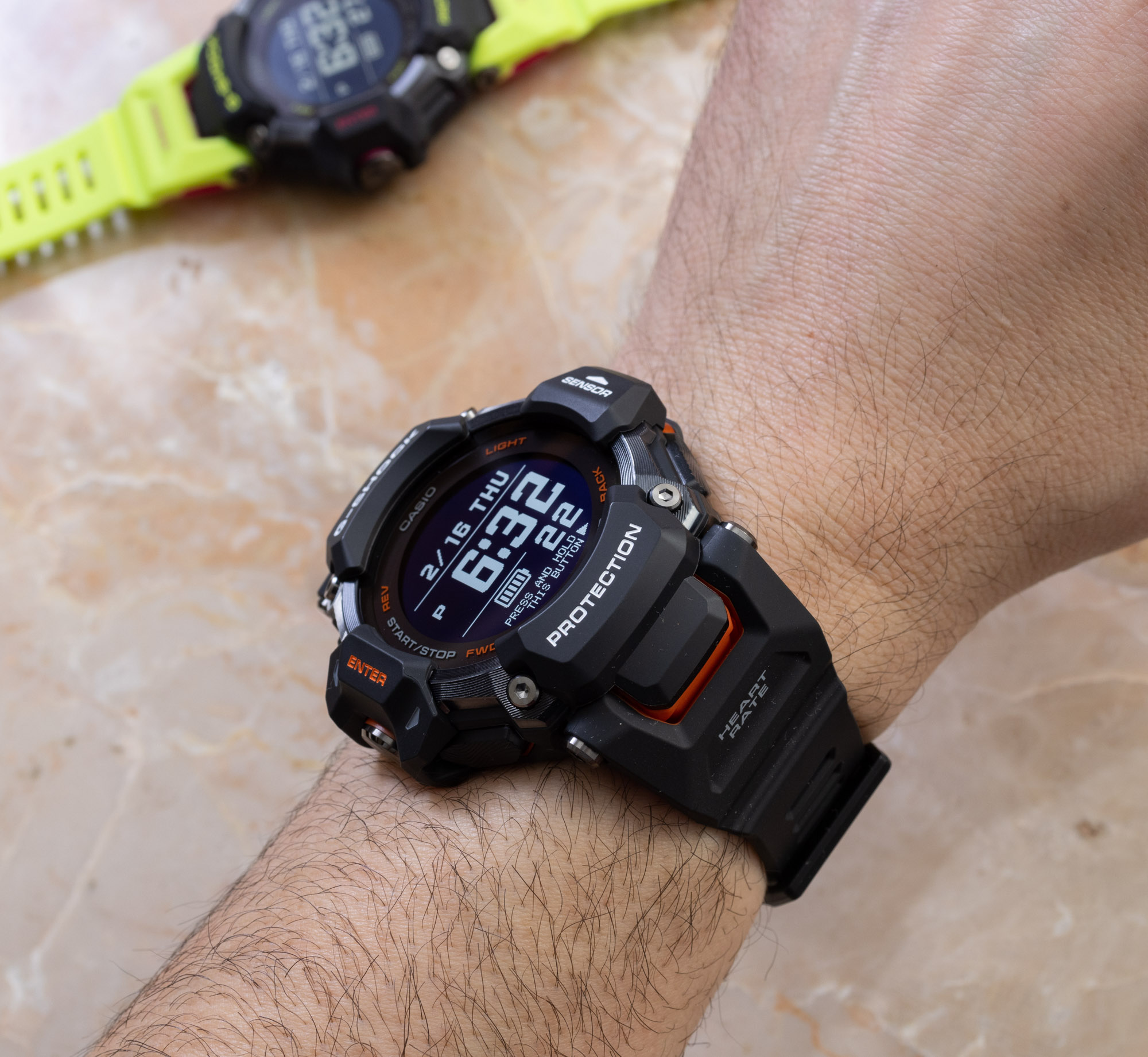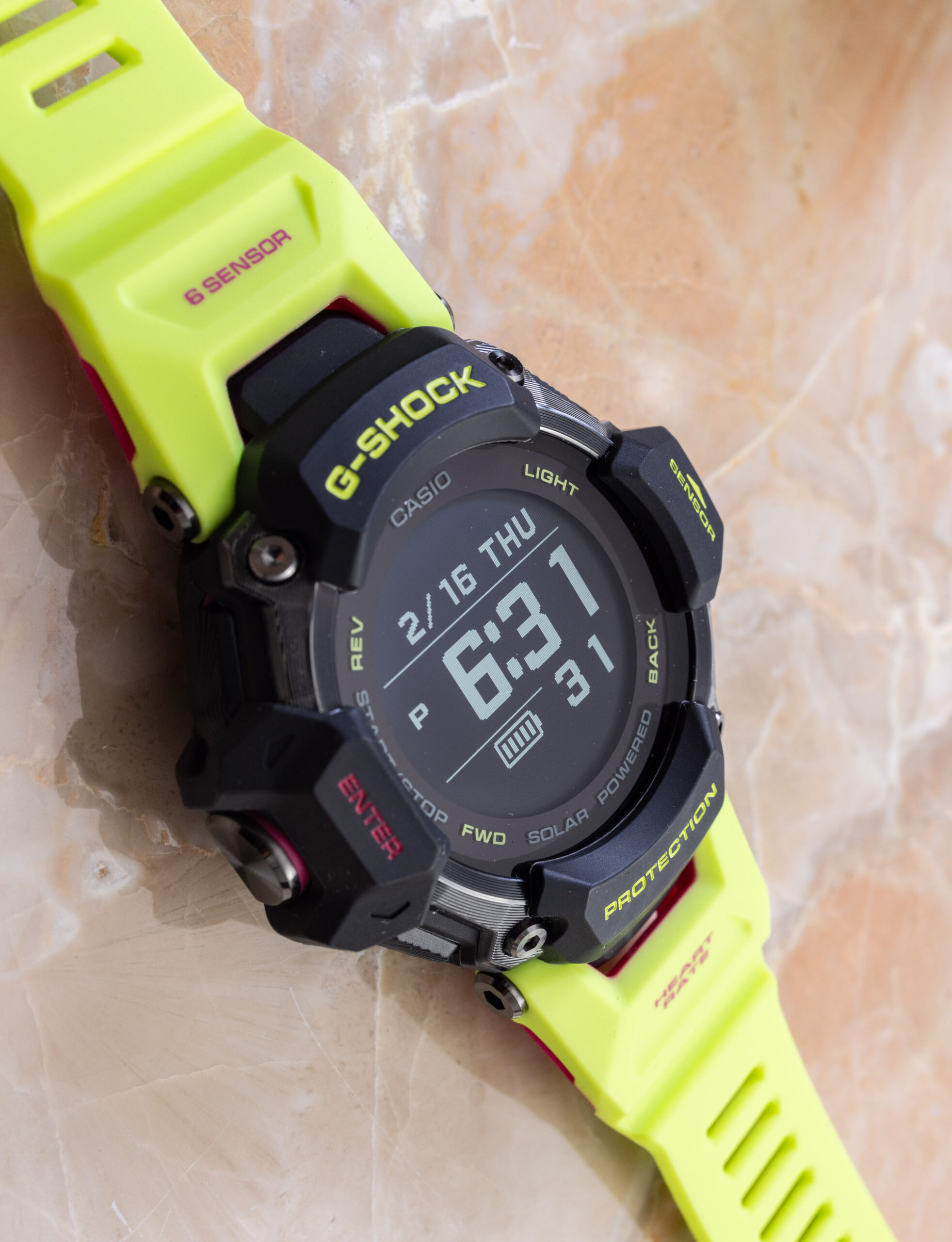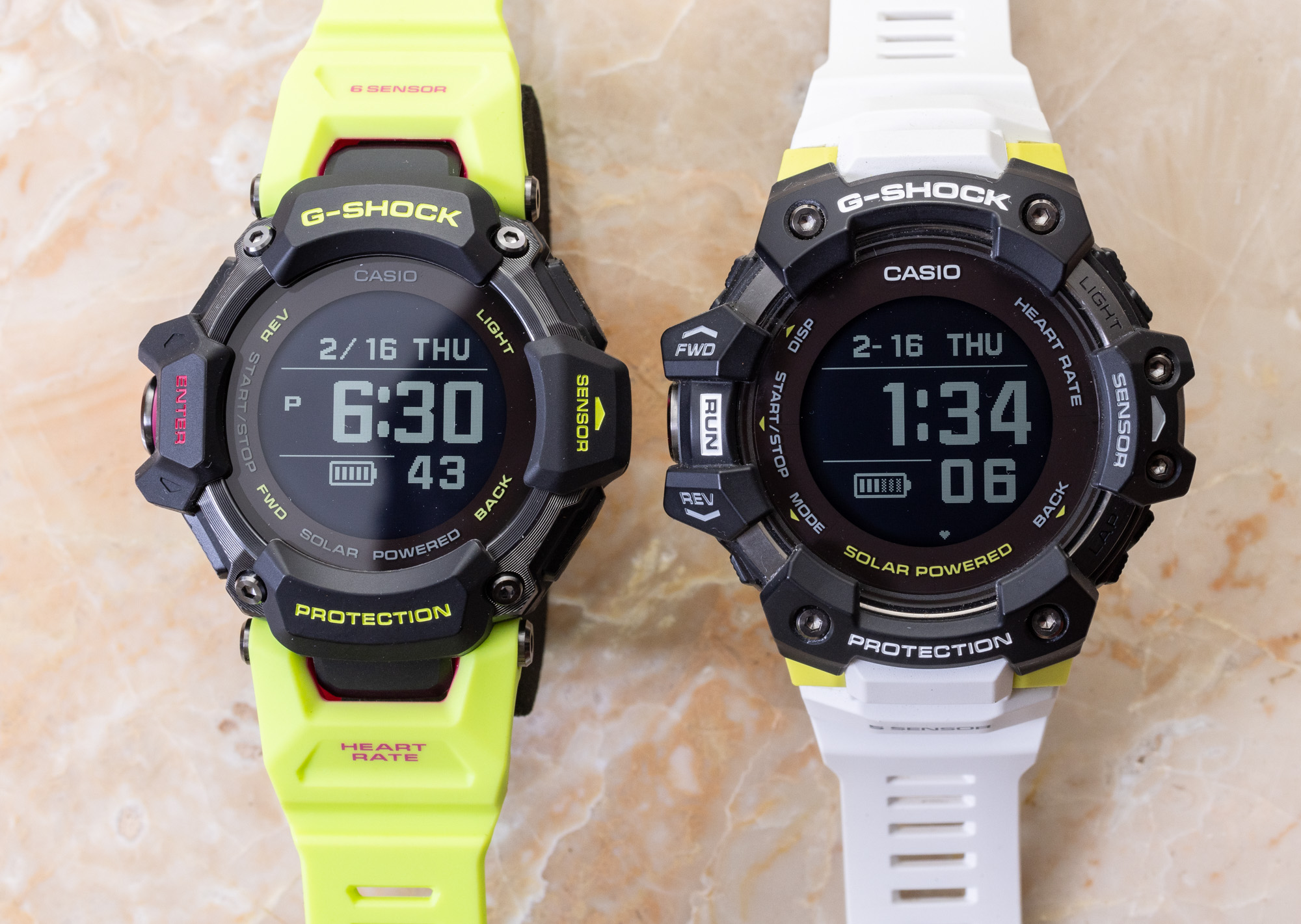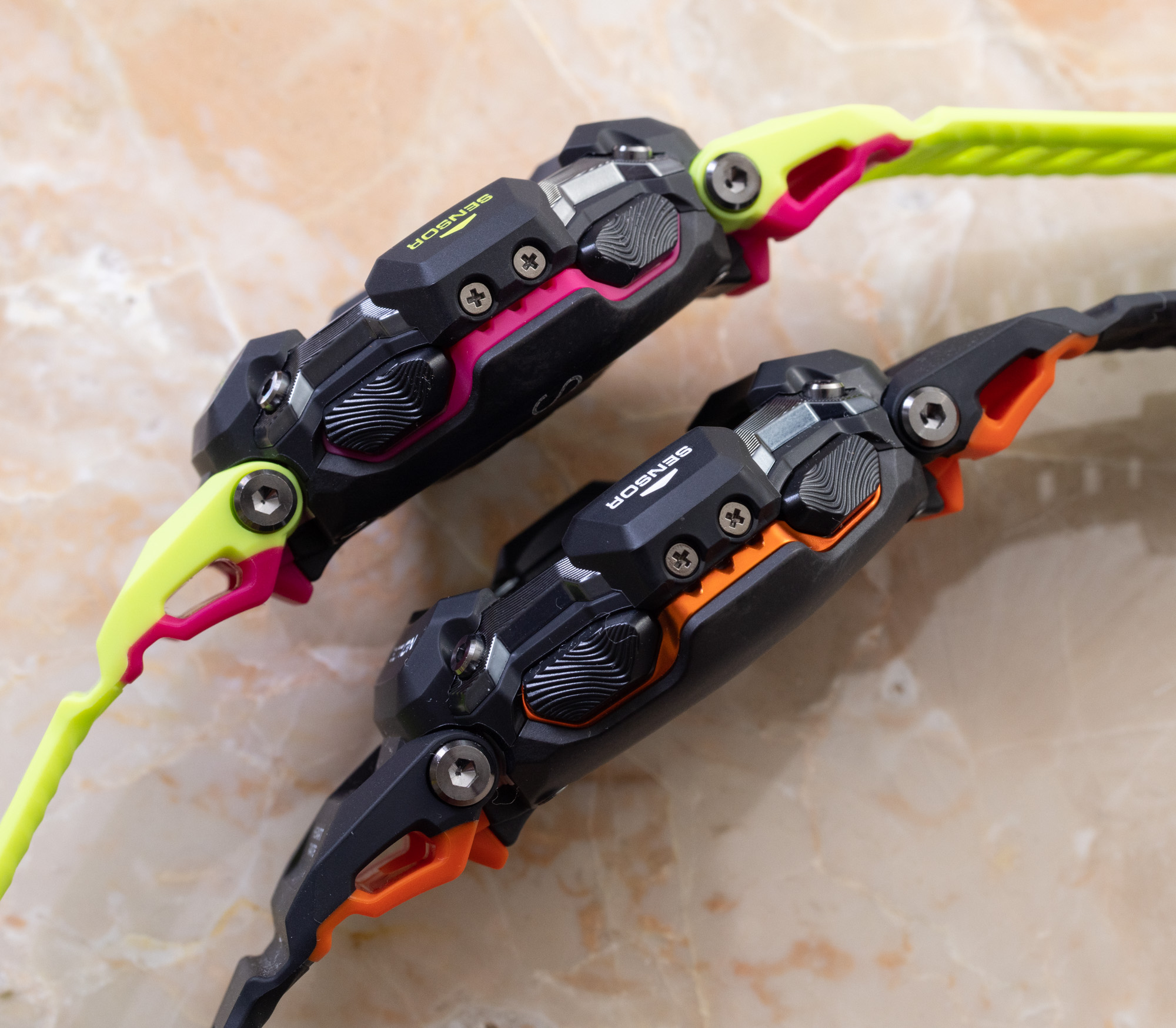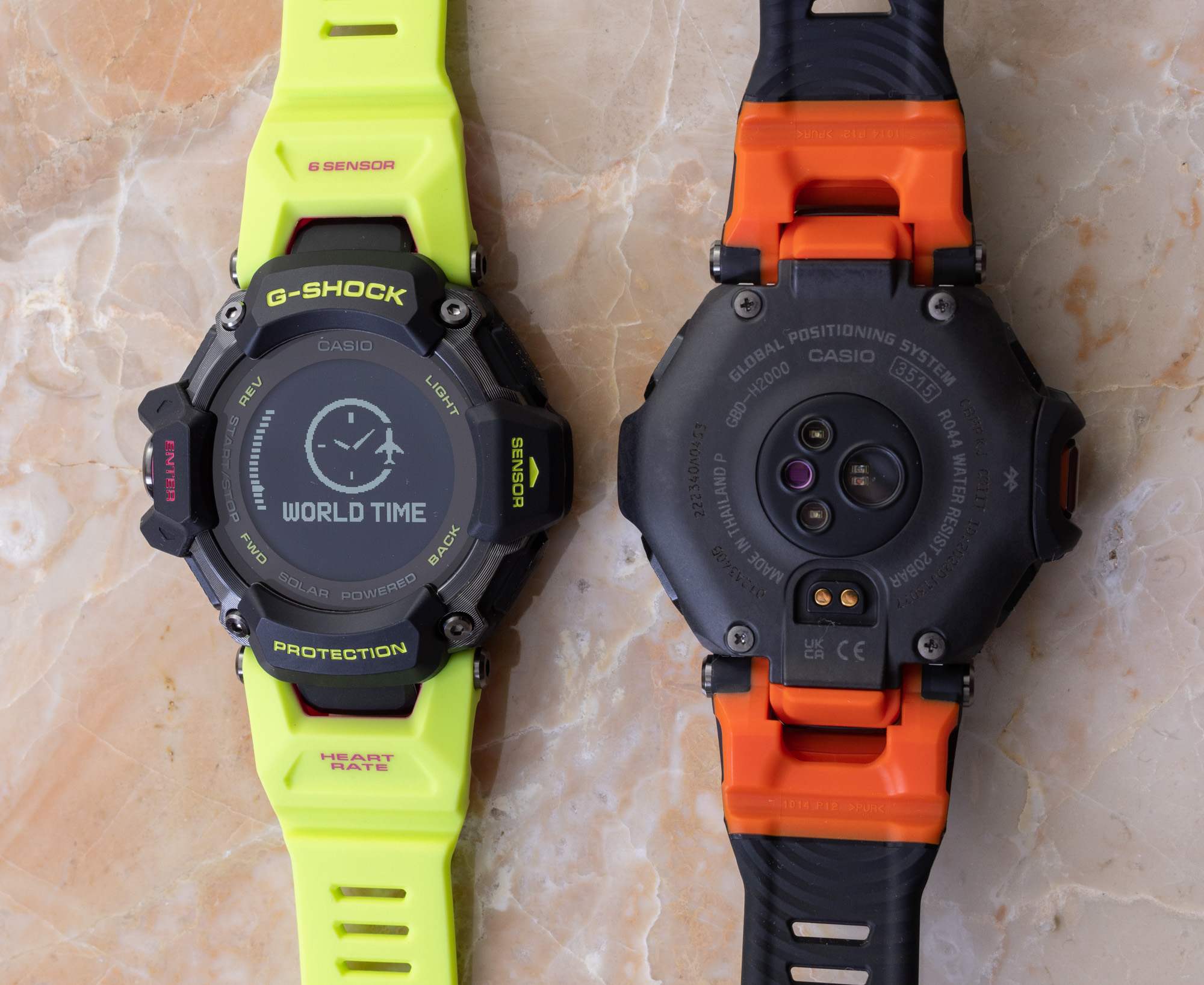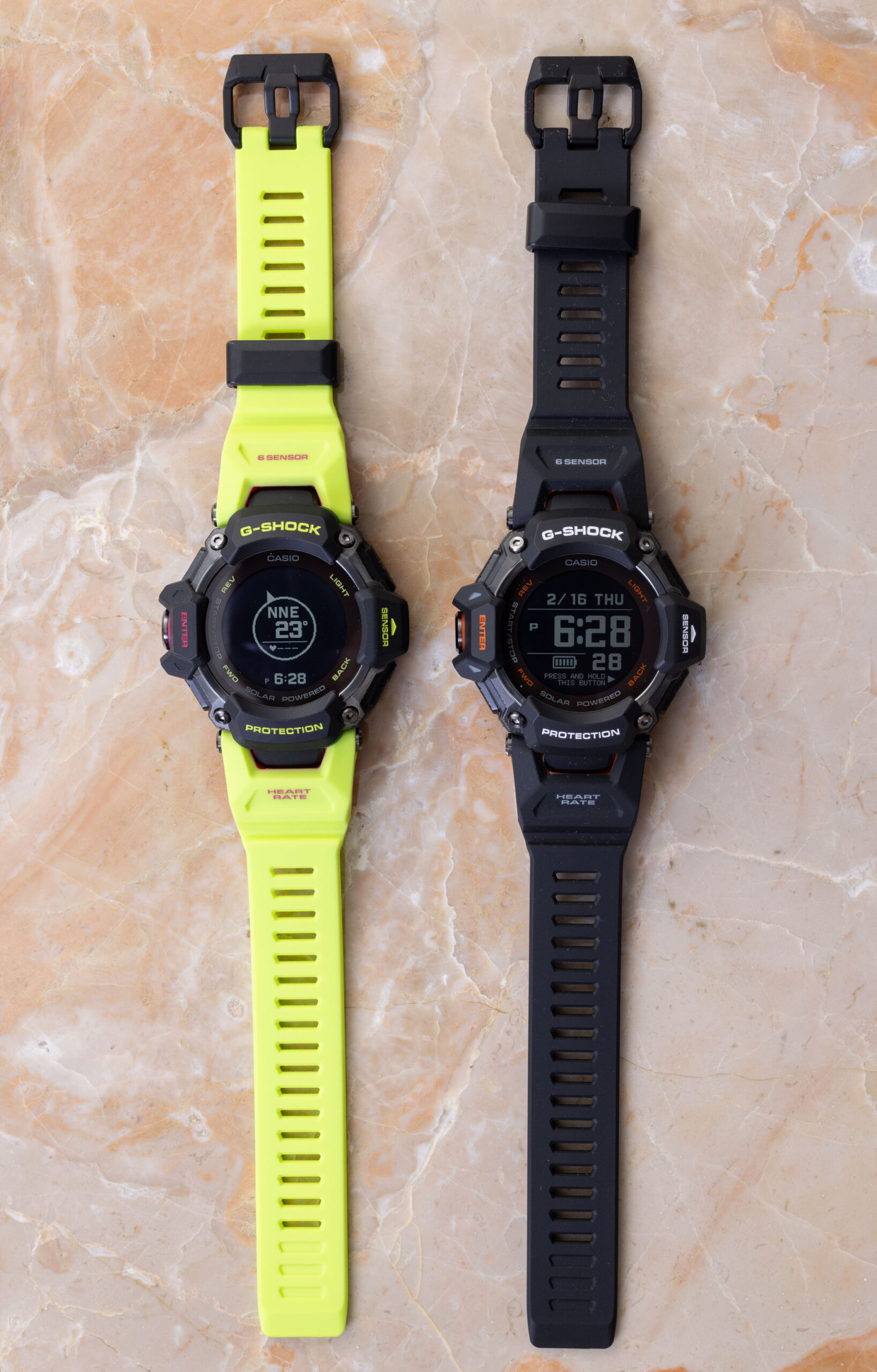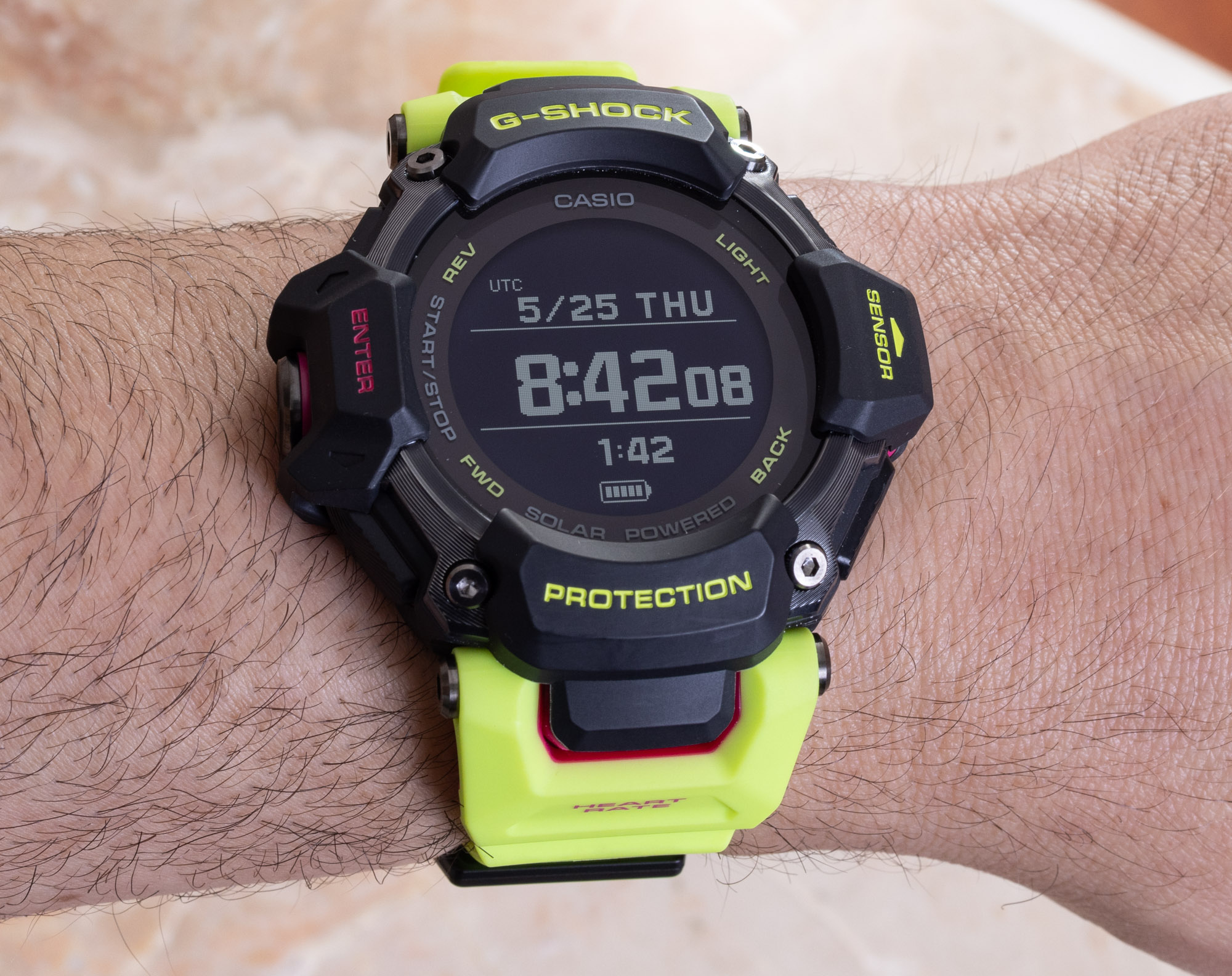
Casio is all about fitness and activity tracking right now. Look at a variety of Casio G-Shock watches produced over the last few years, and you’ll find numerous instances where new features and functionality focus on tracking the wearer’s fitness habits, as well as overall activity. A great example is how a swathe of low-cost G-Shock watches now include step counters (pedometers), or how Casio is fitting more watches with heart-rate monitors. Casio wastes no time launching innovative new products in this space. This new G-Shock Move GBD-H2000 comes only two years after the debut Casio G-Shock Move GDB-H1000 (aBlogtoWatch review here).
The GBD-H1000 to GBD-H2000 model generation is more than a minor upgrade. Casio put lots of effort both into the hardware and software elements of these G-Shock Move watches. These are flagship G-Shock fitness tracking products that represent a current apex of where Casio’s software and engineering teams are currently at. Users familiar with the GBD-H1000 will find that the GBD-H2000 is not only appreciably slimmer and smaller to wear, but that it also has a brand new software operating system with a new level of functionality.
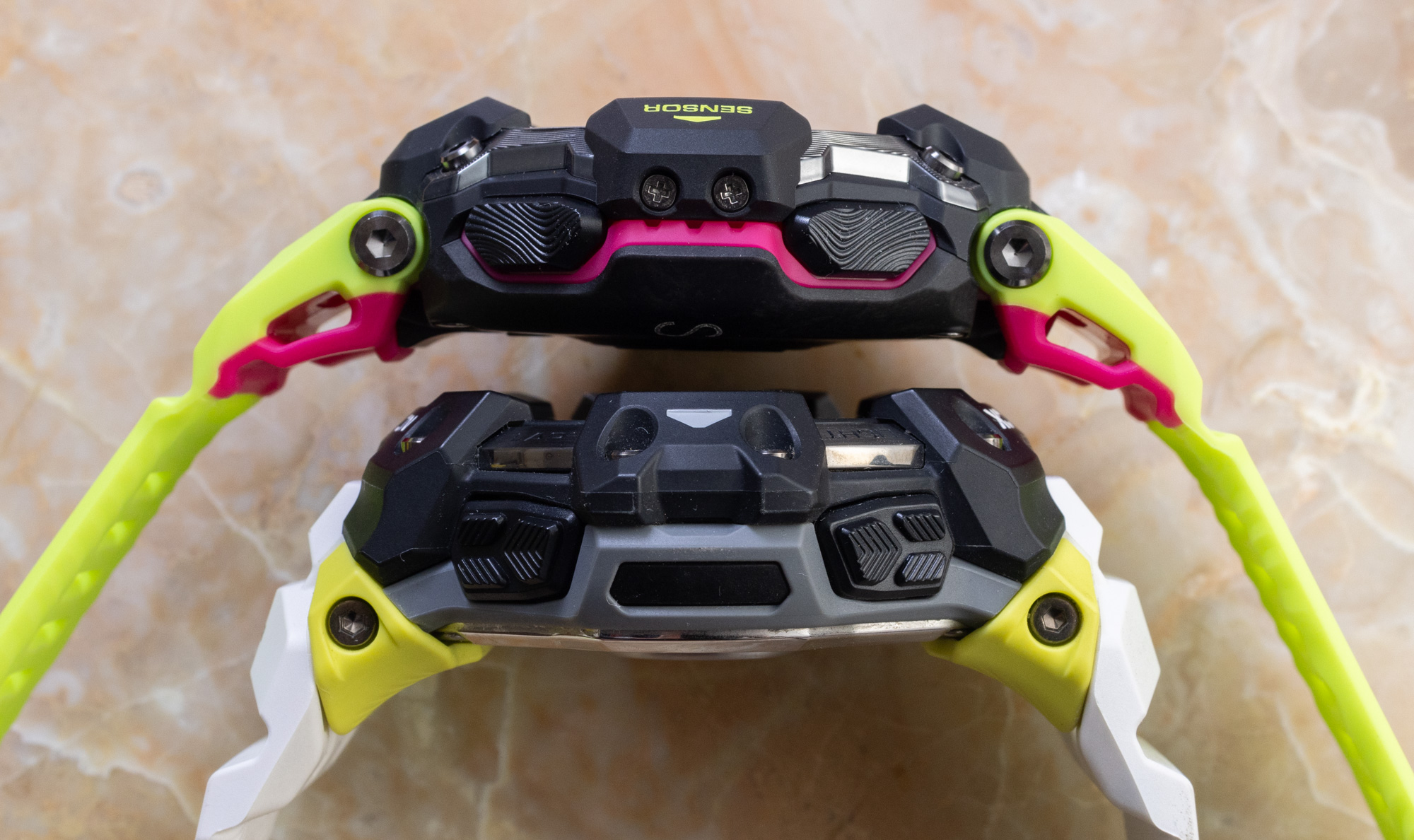
When Casio first launched the G-Shock Move GBD-H2000, part of the initial news involved Casio now using Polar brand fitness algorithms. This is the underlying math that takes sensor data and translates it into information and advice to the wearer; these formulas are complicated and require constant updates. Casio is wise not to develop its own formulas when doing so is not its core business. This is also very interesting to me because, just recently, Casio announced that it didn’t want to make Google Wear OS smartwatches anymore (for the time being) because of limitations on what it could do with the licensed software. Casio has a very different philosophy when it comes to software, and what I have found is that while the brand really appreciated integrating with other data sets and functionality, Casio wants core control over the operating system and its performance. The GBD-H2000 represents the latest step in that development.
For me, the new software is the most exciting part of the GBD-H2000, though it does imply that wearers will have to learn some new things. Part of the joy of getting a G-Shock over the years was that, for the most part, new G-Shock watches operated like older G-Shock watches. With all the added functionality, Bluetooth connectivity, and various other novel features, longstanding G-Shock fans will need to open their minds to learning some new things. The good news is that Casio puts a huge emphasis on software accessibility and intuitiveness within the framework of running very lean (low power consuming) software that should be entirely free from glitches and bugs. A bit more on that in a moment. First, here’s the GBD-H2000 and how it fits into the larger Casio product catalog.
https://youtu.be/wViE2M1SYoY
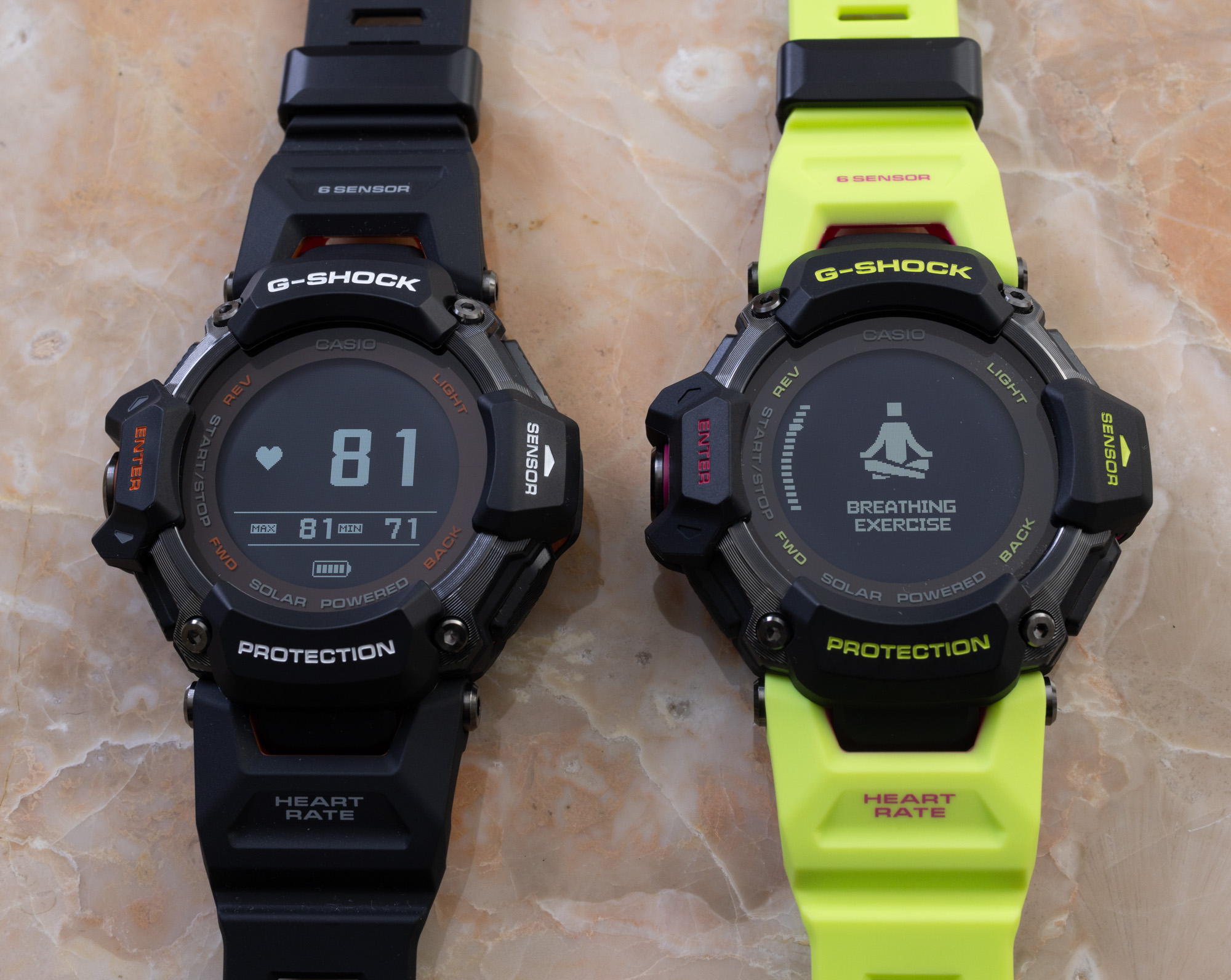
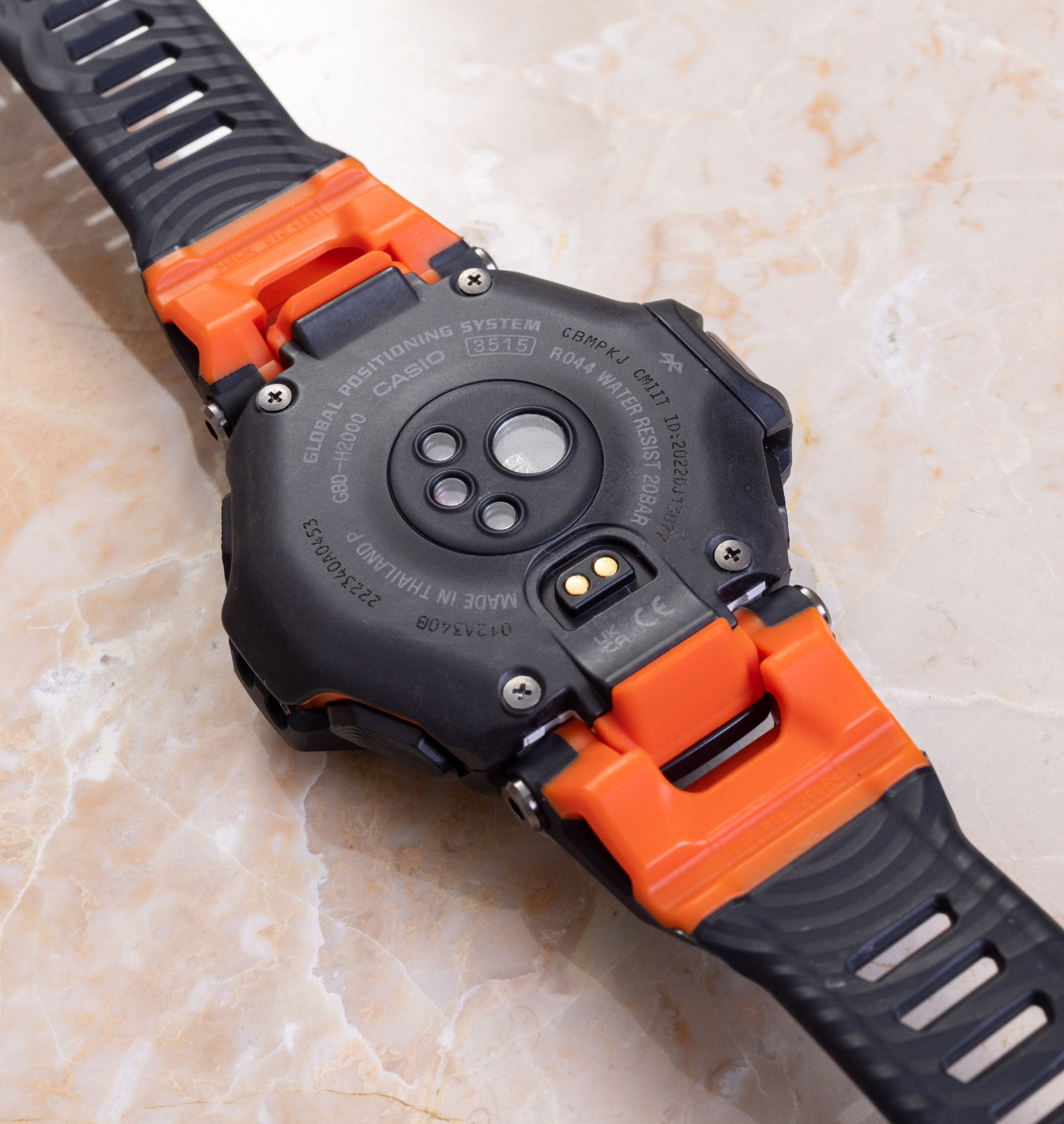
Representing the most modern G-Shock design cues available, the GBD-H2000 is meant as a combination of everyday “do anything” sports watches (i.e., what G-Shock has been to most people for a while), and a sophisticated fitness and activity tracking device. How much or how little you use these latter functions is up to you. Some people will just want to know how many steps they took during the day, and some people will want to track their daily exercise routine, sleep habits, and even instances of meditative breathing.
In addition to being smaller and lighter to wear on the wrist than the predecessor GBD-H1000 watch, the GBD-H2000 watch has some convenience features such as both solar and USB charging. I actually found the battery life to be excellent (the low power-consuming screen helps), and unless you don’t spend much time outside, the solar charging kept the watch pretty full. I like that when the battery is full, it just says “High.” For those who engage in a lot of sports tracking and the related GPS tracking functionality, solar charging isn’t going to be enough to keep the GBD-H2000 powered all the time. Casio developed a new banana-shaped charging clip for the watch. It is amazing to me how engineers cannot seem to agree on how to charge a smartwatch. I’ve seen everything from forms of inductive charging to proprietary connectors and cables, with brands frequently changing them up. Let’s just assume that when it comes to how to charge your smartwatches, not only are there few established best practices, but it is an area when engineers are hard at work looking for improvements and enhancements.
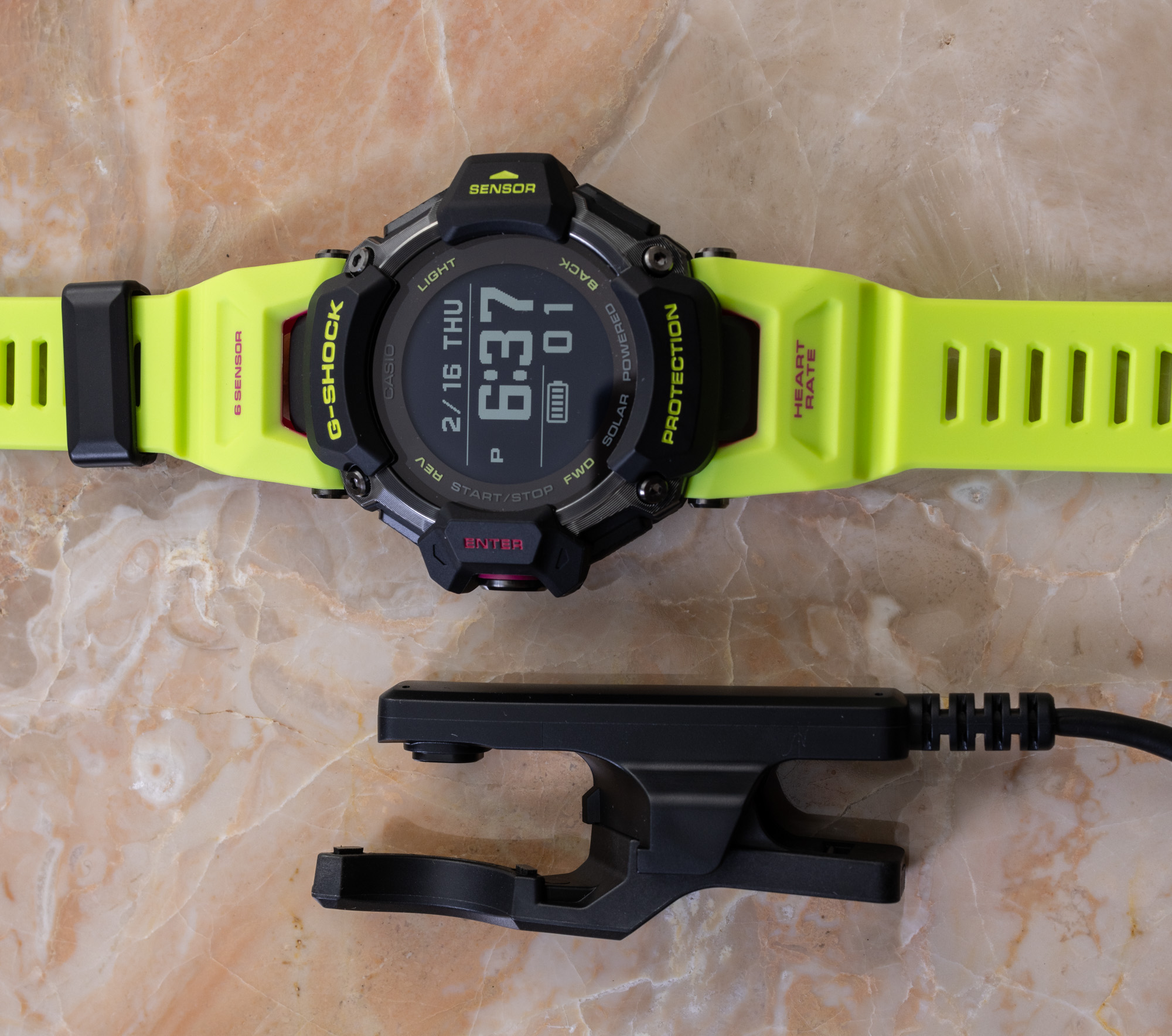
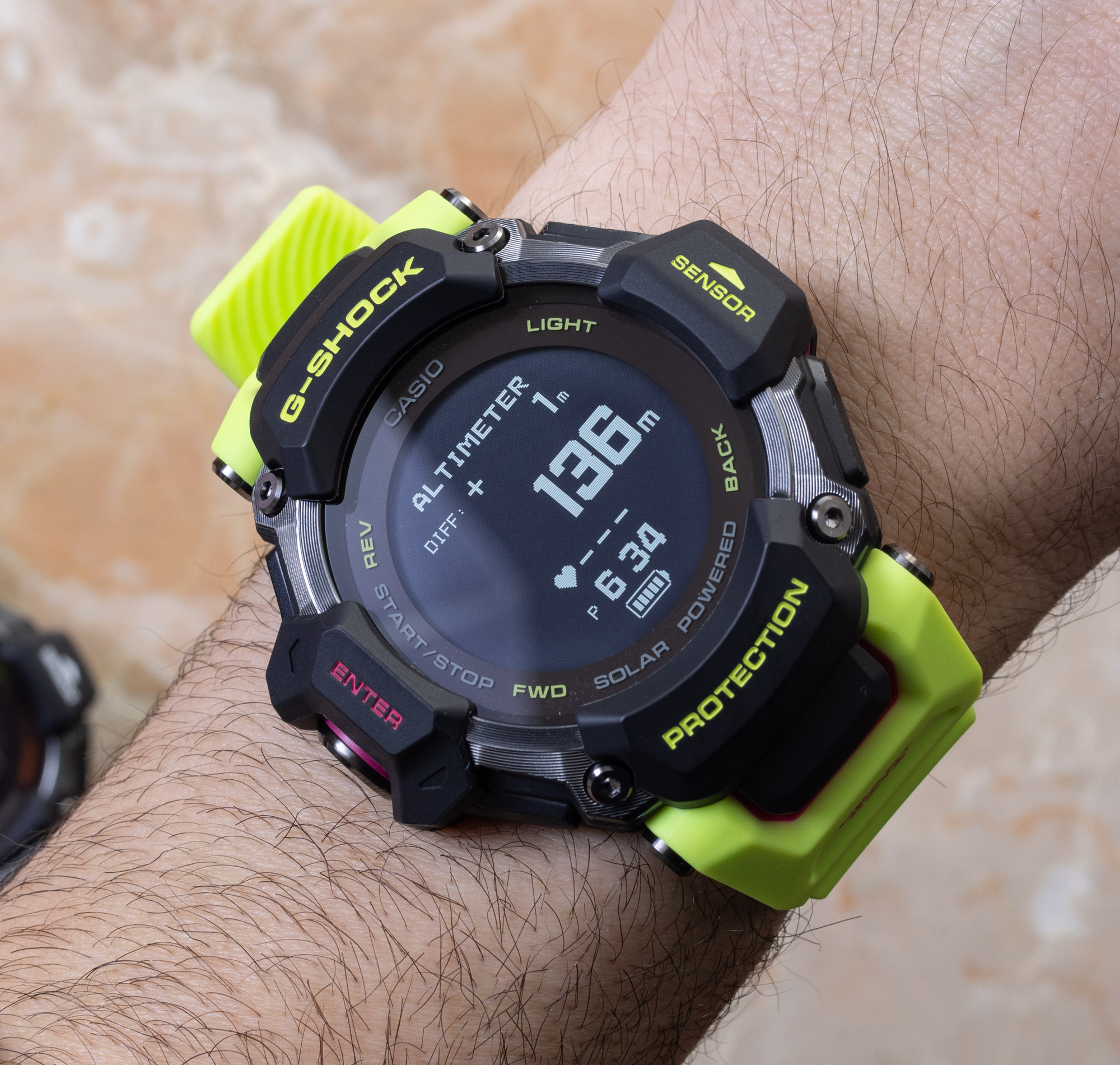 When it comes to sensors and overall capabilities, the GBD-H2000 is similar to the GBD-H1000, save for some of the new software functions that are, of course, new. The goal of the new product case is to further miniaturize the hardware while making the G-Shock Move even more comfortable to wear. These watches not only need to contain a lot of sophisticated hardware (produced by Casio) but also be G-Shock tough/durable. Use of Carbon Core Guard and other advanced manufacturing techniques helps Casio offer the same performance but in smaller packages. The GBD-H2000 case weighs just 63 grams. Even though the dimensions sound large, this GBD-H2000 generation G-Shock Move is significantly smaller (and also better looking) than the previous generation GBD-H1000. On the wrist, the “bio-resin” case of the GBD-H2000 is 52.6mm wide, 19.4mm-thick, and with a 59.6mm lug-to-lug distance. The bio-resin strap is comfortable and pliable. It also has a unique system under lugs that allows the larger overall dimensions to wear better on smaller wrists (such as mine).
When it comes to sensors and overall capabilities, the GBD-H2000 is similar to the GBD-H1000, save for some of the new software functions that are, of course, new. The goal of the new product case is to further miniaturize the hardware while making the G-Shock Move even more comfortable to wear. These watches not only need to contain a lot of sophisticated hardware (produced by Casio) but also be G-Shock tough/durable. Use of Carbon Core Guard and other advanced manufacturing techniques helps Casio offer the same performance but in smaller packages. The GBD-H2000 case weighs just 63 grams. Even though the dimensions sound large, this GBD-H2000 generation G-Shock Move is significantly smaller (and also better looking) than the previous generation GBD-H1000. On the wrist, the “bio-resin” case of the GBD-H2000 is 52.6mm wide, 19.4mm-thick, and with a 59.6mm lug-to-lug distance. The bio-resin strap is comfortable and pliable. It also has a unique system under lugs that allows the larger overall dimensions to wear better on smaller wrists (such as mine).
Like all G-Shock watches, this GBD-H2000 has 200 meters of water resistance, and over the screen, there is a mineral crystal. Sapphire would have been better, but Casio is really going for an attractive price point here. Accordingly, looking at it overall, the GBD-H2000 is a very aggressively priced product given all the innovation and features. This is very much a “do anything” watch with loads of features and sensors, even if you never plan on using it to perfect your fitness routine.
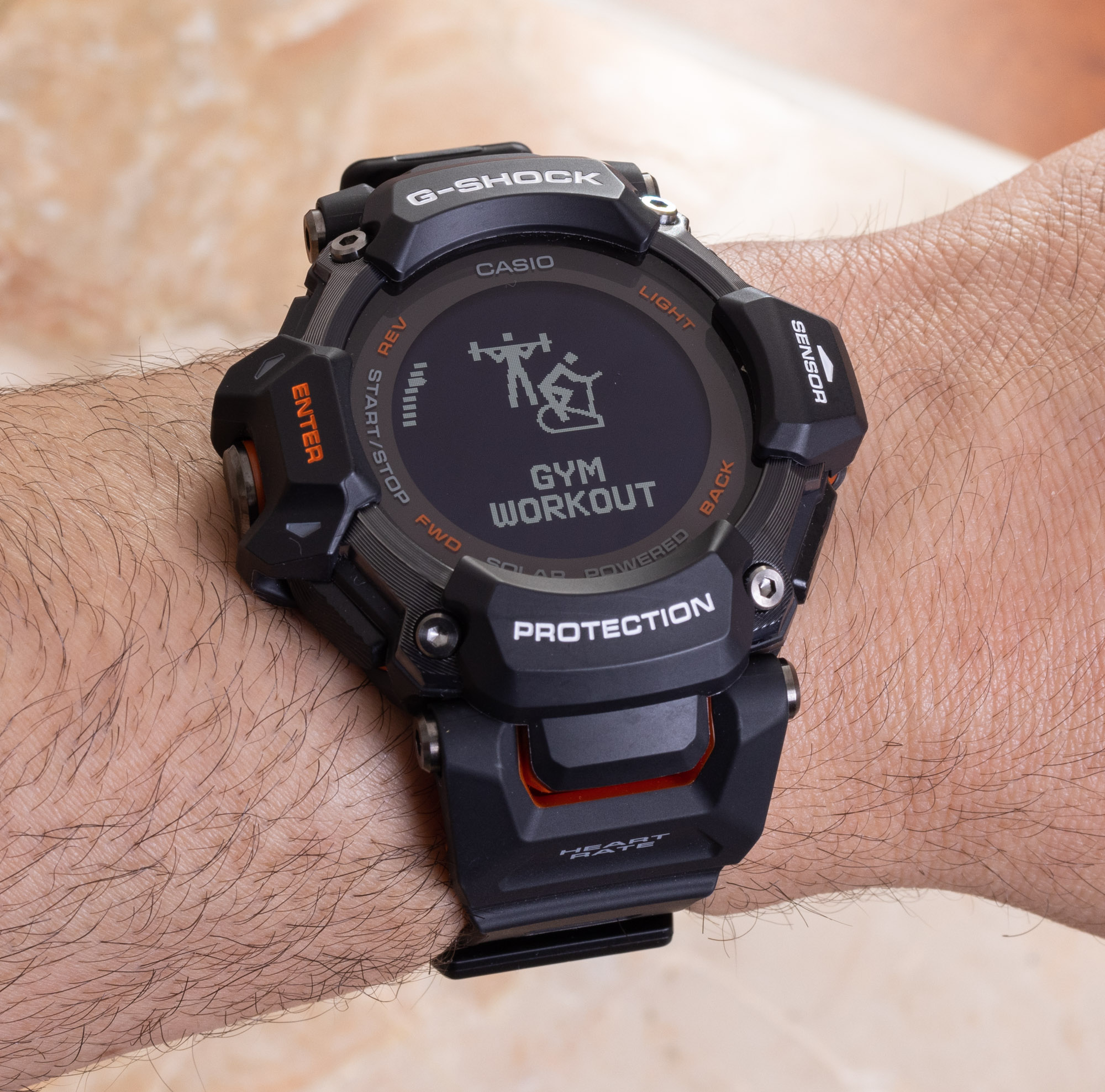
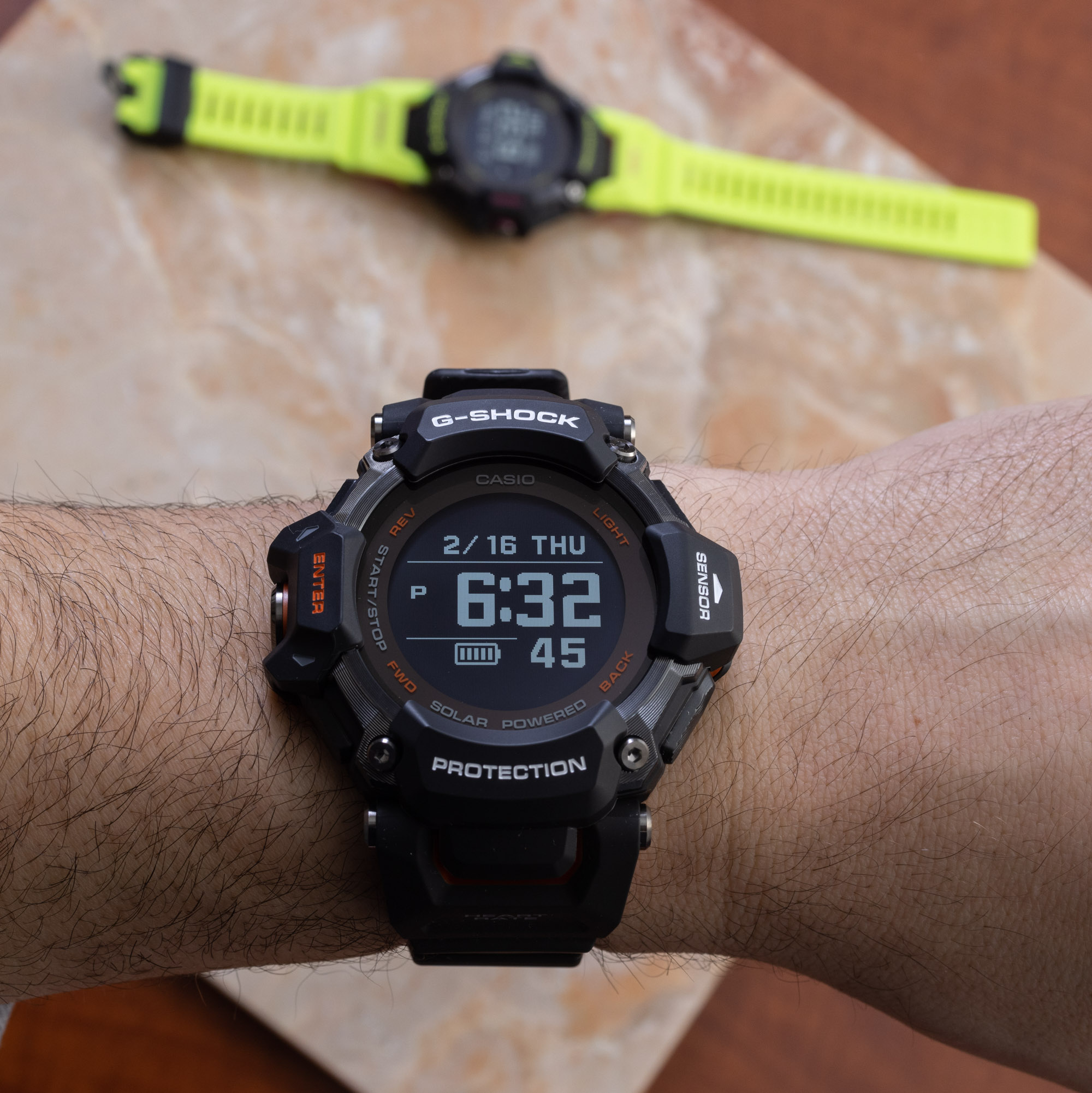 What isn’t so good about it? From a fitness performance and data-tracking perspective, I don’t really have any complaints. The MIP (memory in pixel) screen is monochromatic and offers create contrast in all lighting conditions, though the display and graphics aren’t anything super-fancy. That said, Casio’s software team had a lot more pixels to play with than they are historically accustomed to, so there are more graphical elements in this product compared to what are often very spartan displays in other G-Shock products. With the competition out there today in the larger smartwatch market, demand for artistic animations and whimsical graphics in smartwatch software presentations is only increasing. Casio can continue to spruce up the dial displays and their levels of beauty and variety.
What isn’t so good about it? From a fitness performance and data-tracking perspective, I don’t really have any complaints. The MIP (memory in pixel) screen is monochromatic and offers create contrast in all lighting conditions, though the display and graphics aren’t anything super-fancy. That said, Casio’s software team had a lot more pixels to play with than they are historically accustomed to, so there are more graphical elements in this product compared to what are often very spartan displays in other G-Shock products. With the competition out there today in the larger smartwatch market, demand for artistic animations and whimsical graphics in smartwatch software presentations is only increasing. Casio can continue to spruce up the dial displays and their levels of beauty and variety.
There is also a bit of a learning curve with this new-generation operating system, which is controlled using five pushers on the case. I will say that Casio is very adept at Bluetooth connections, at this point, and the accompanying smartphone app that allows you to control parts of the watch, as well as see its data, is getting better and better. For the people who require serious data to assist with their athletic routines, Casio potentially offers a lot here. I am a more casual user who likes to track things like hikes and bike rides, so it’s got me covered. It is also a potential daily-wear G-Shock, as it is more or less the dimensions of many other G-Shocks (especially true with more color-neutral black GBDH2000-1A), but with some new features and tech that make it additionally interesting. Clearly, at least a few product teams at Casio consider the GBD-H2000 products to be the most advanced G-Shocks being produced right now. Price is $399 USD. Learn more at the Casio website.

